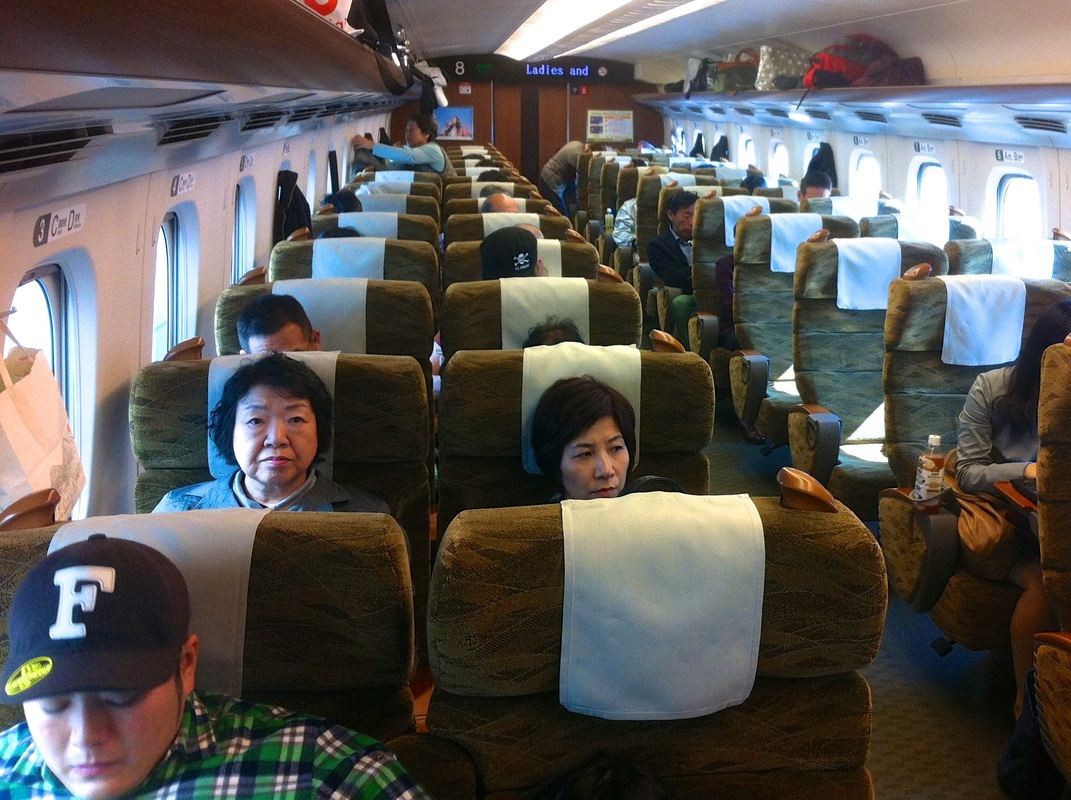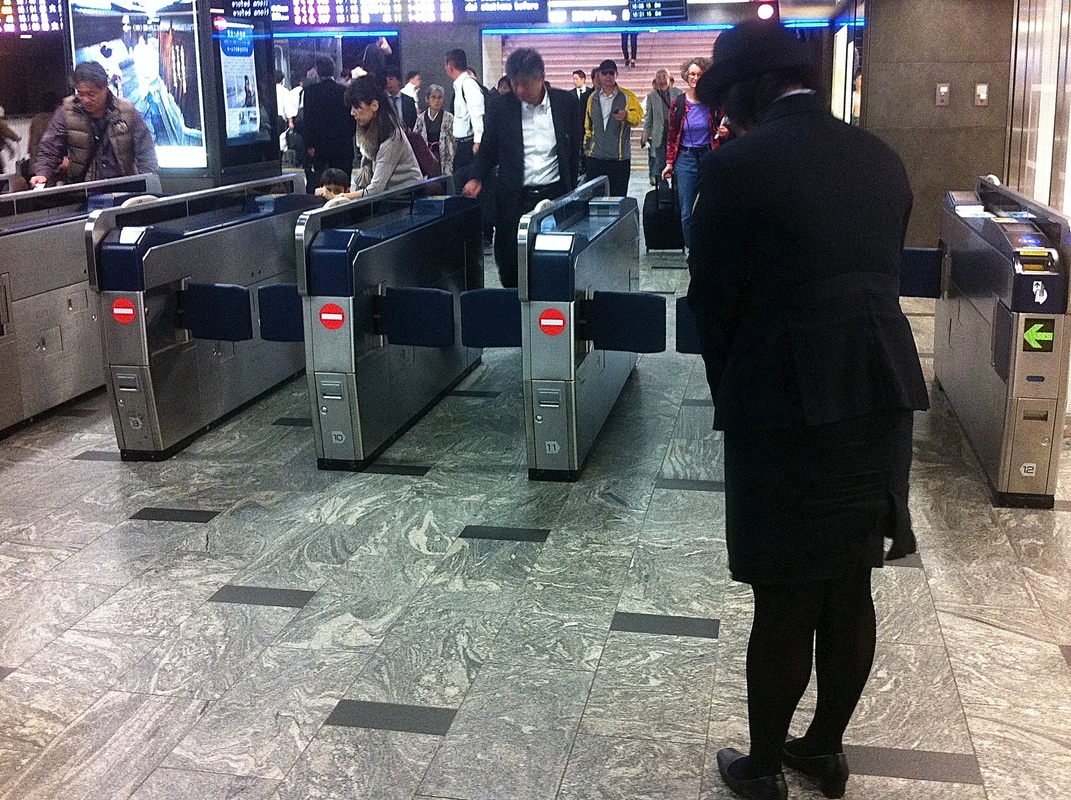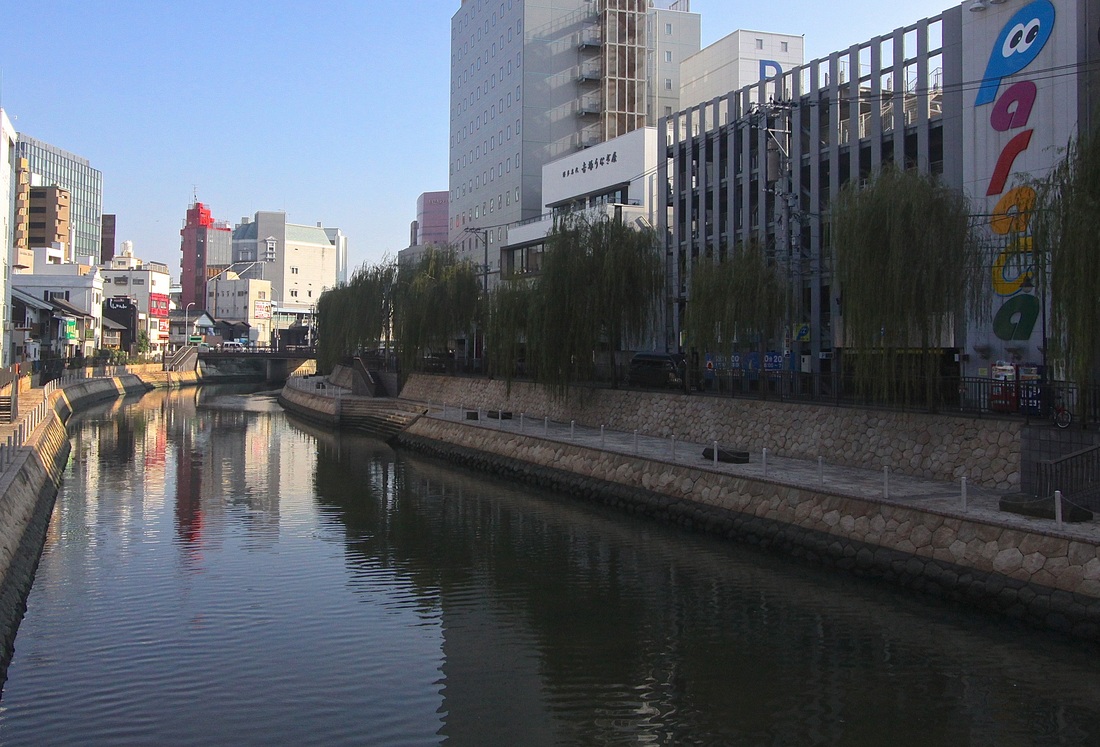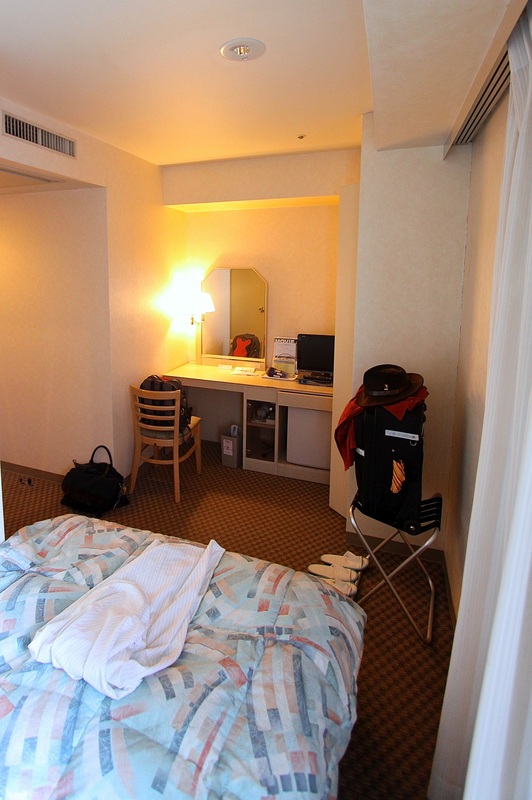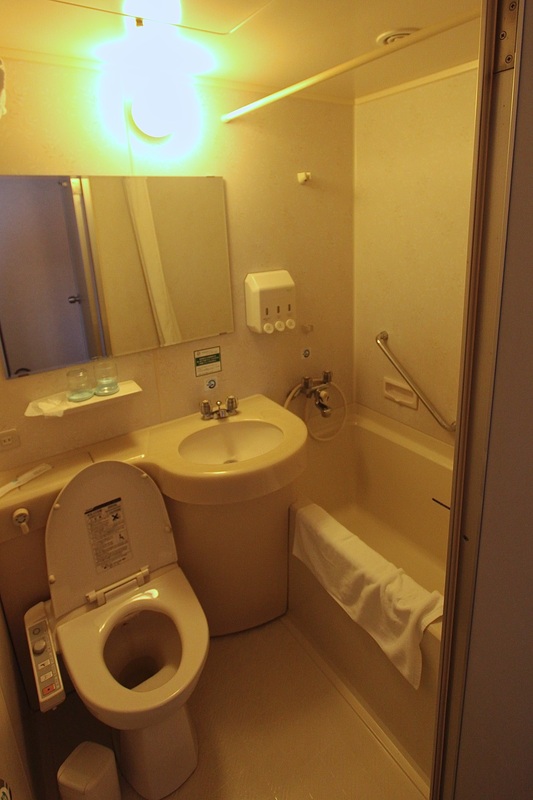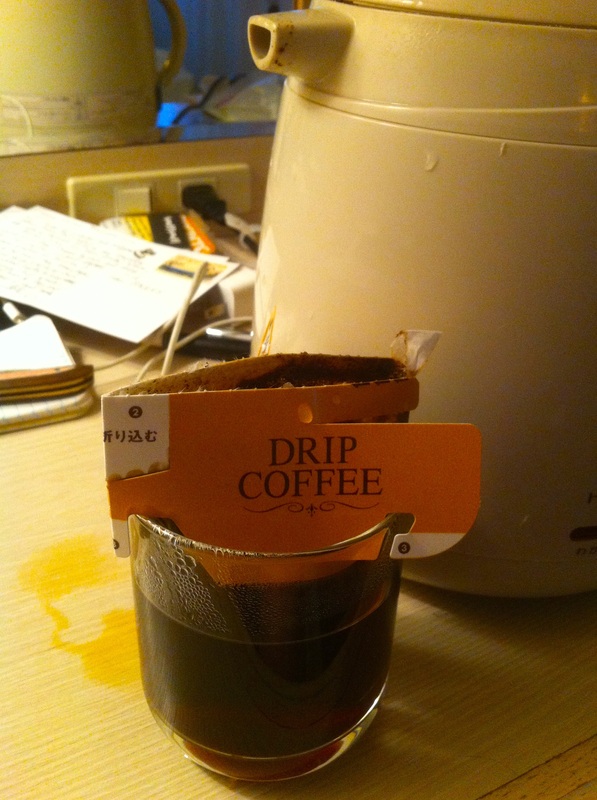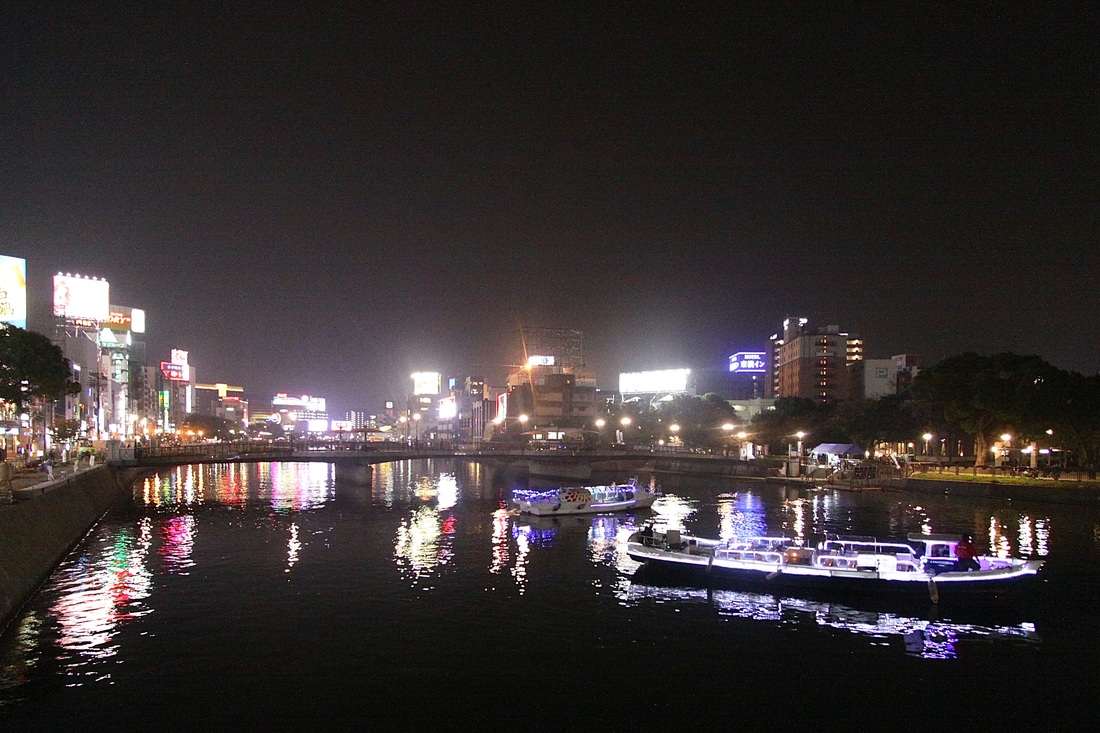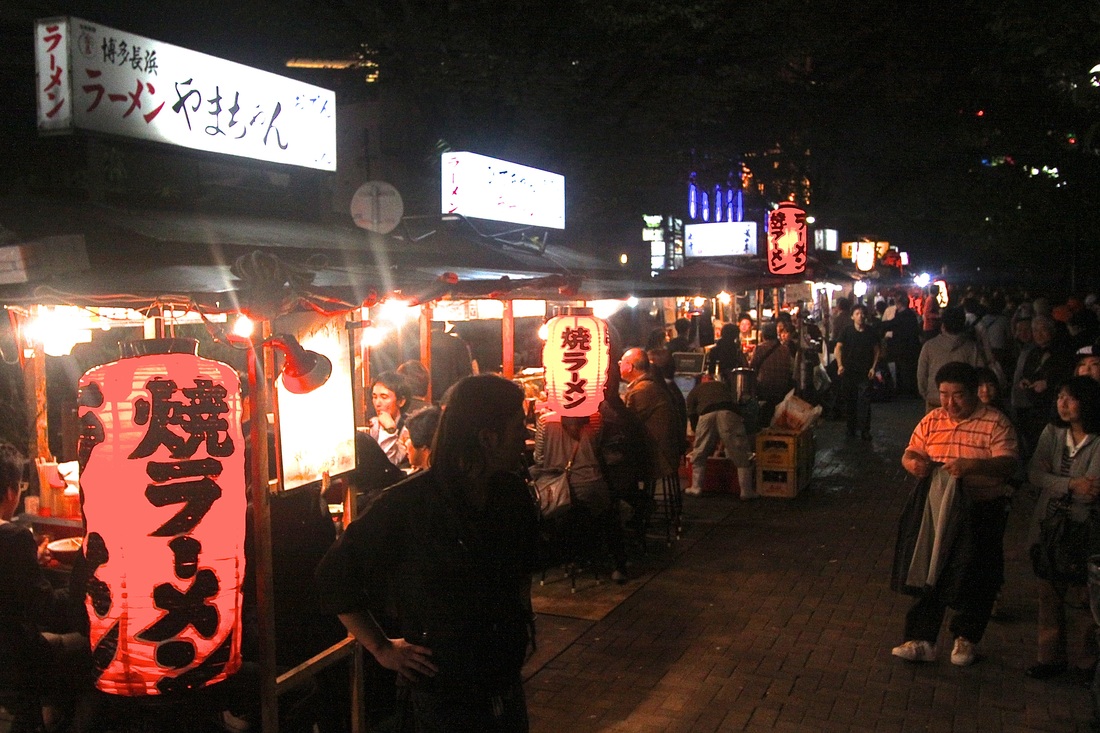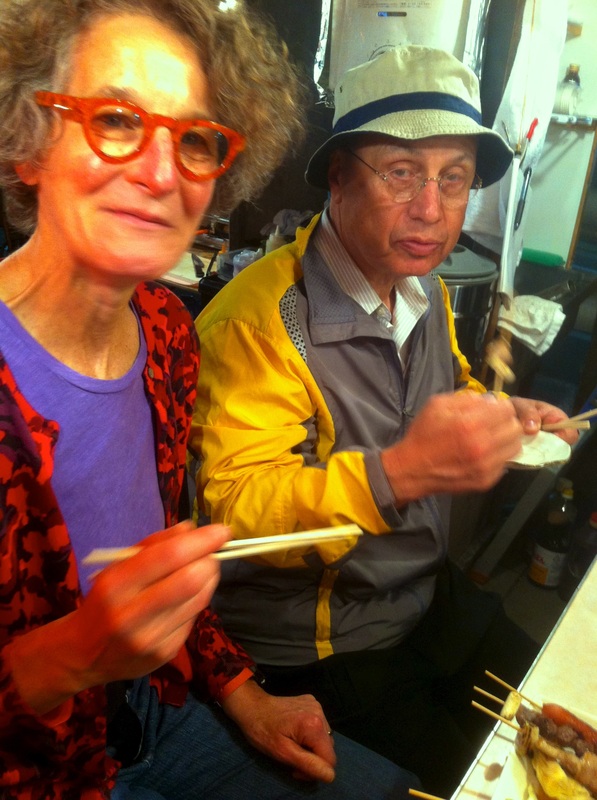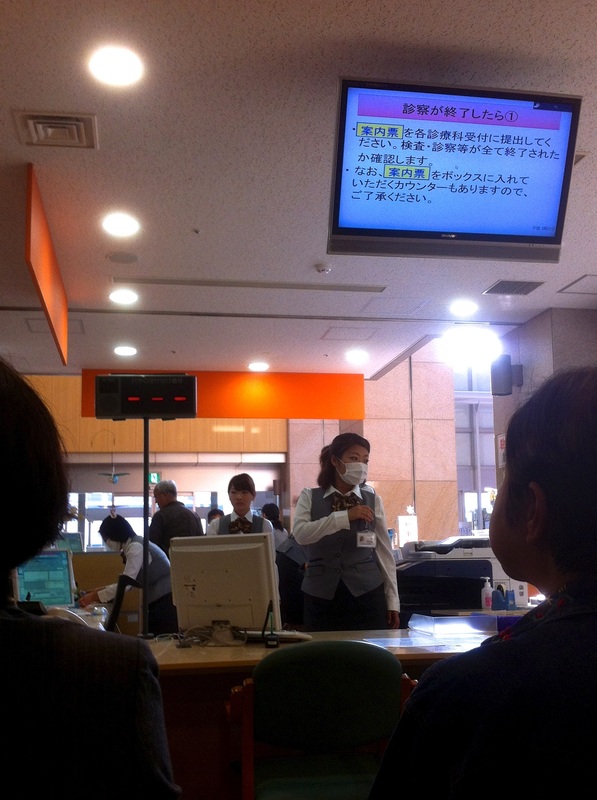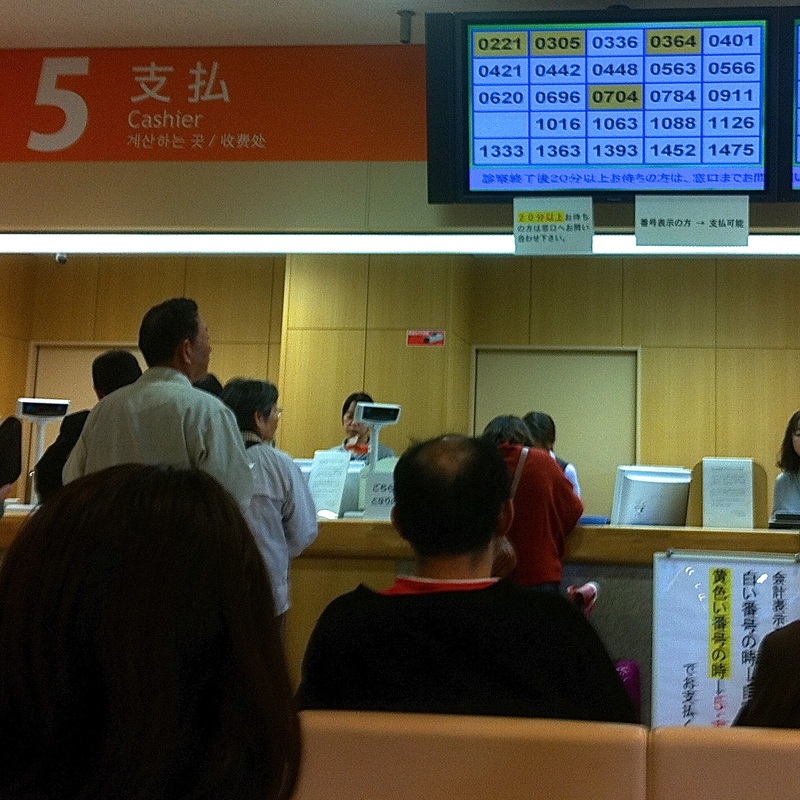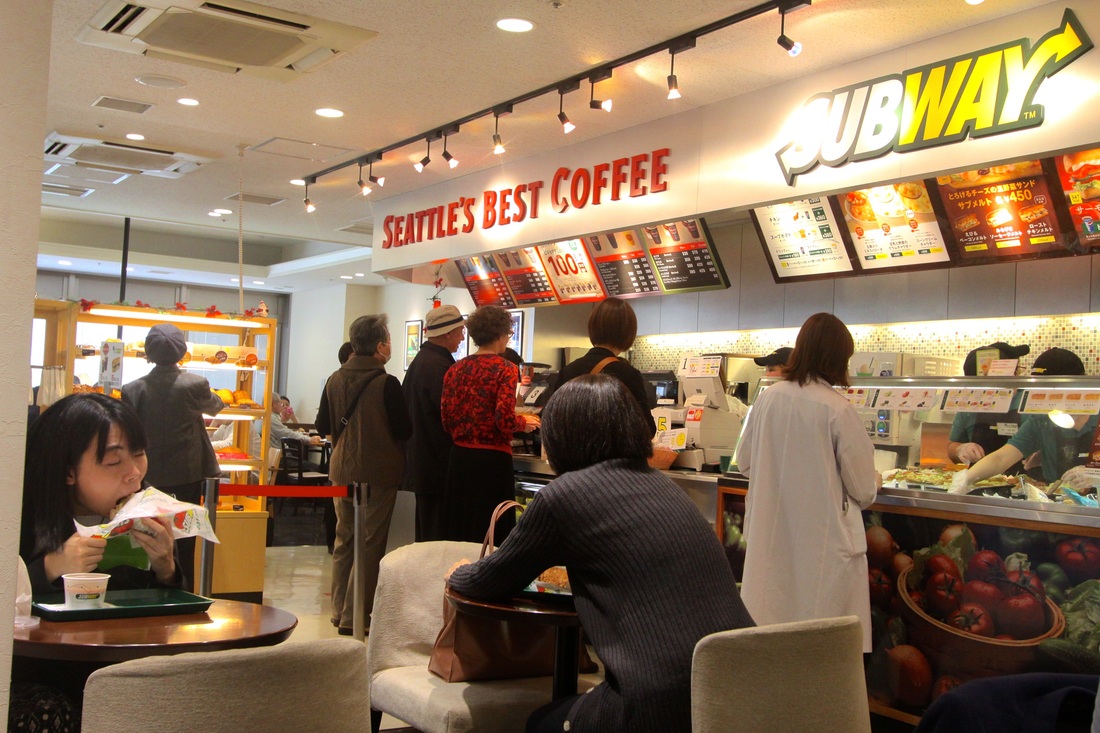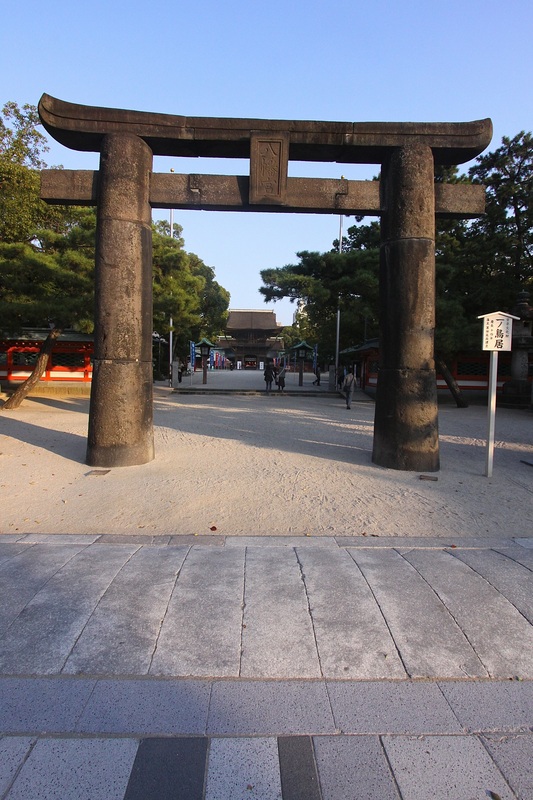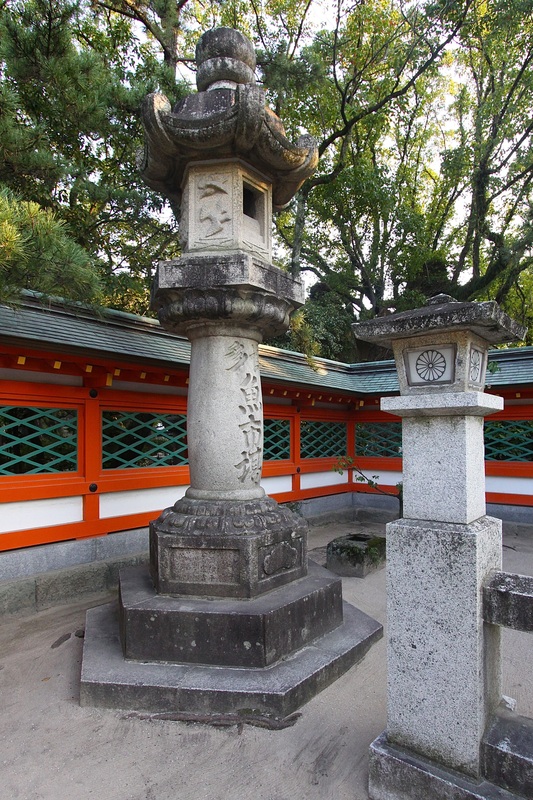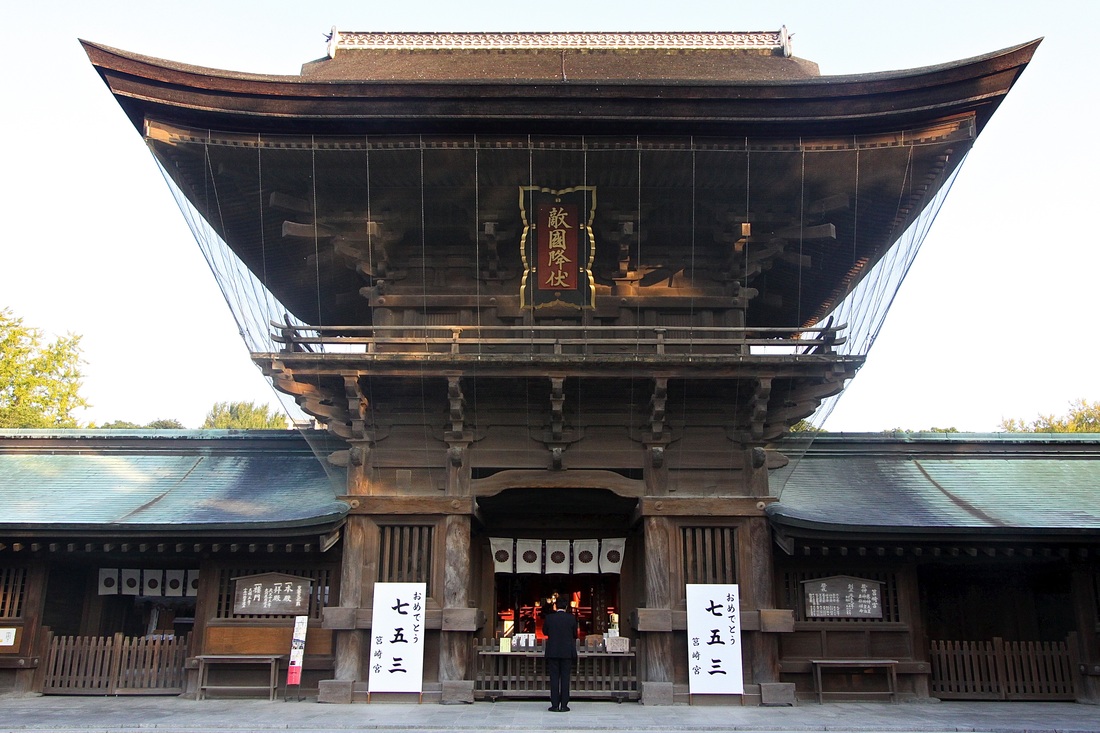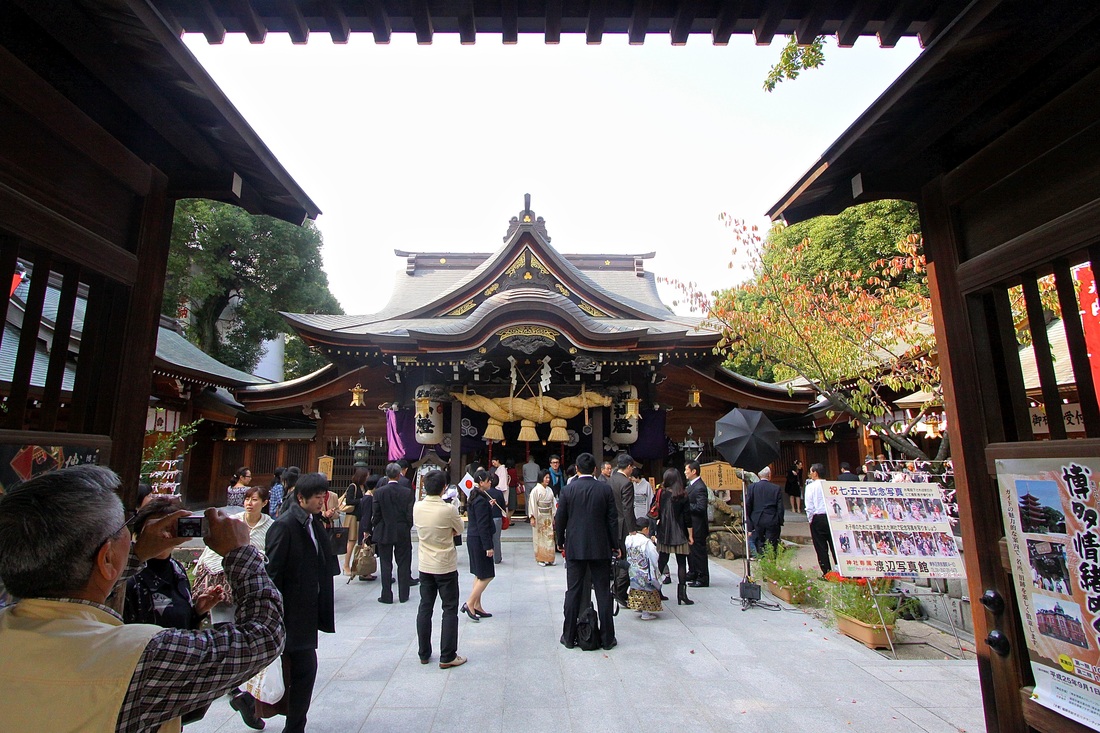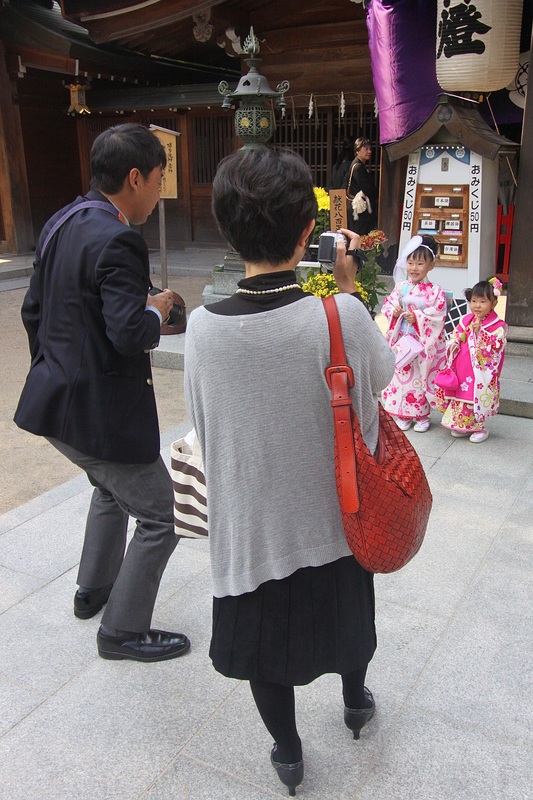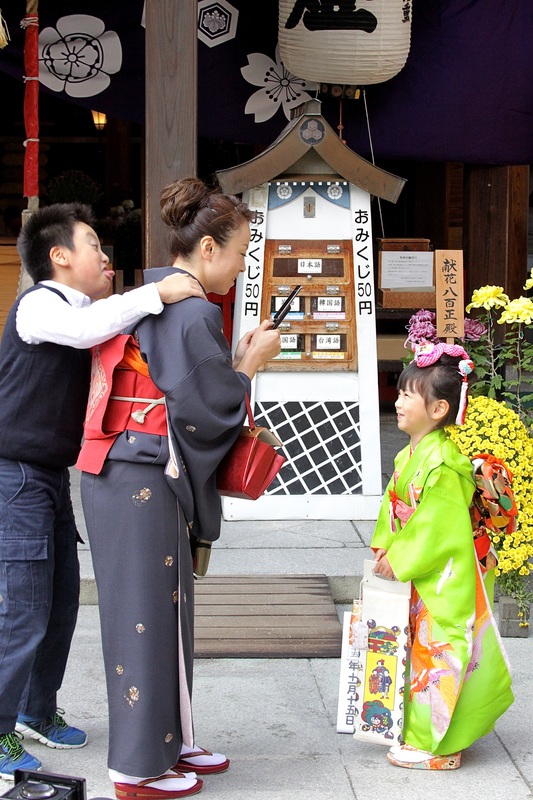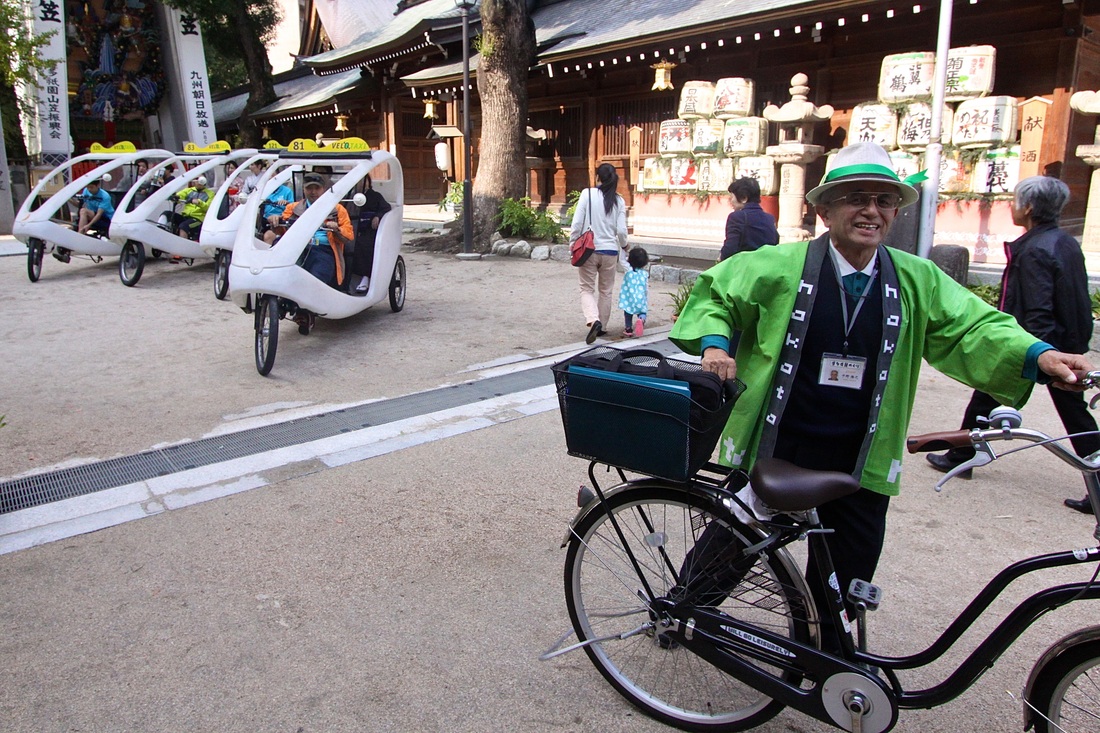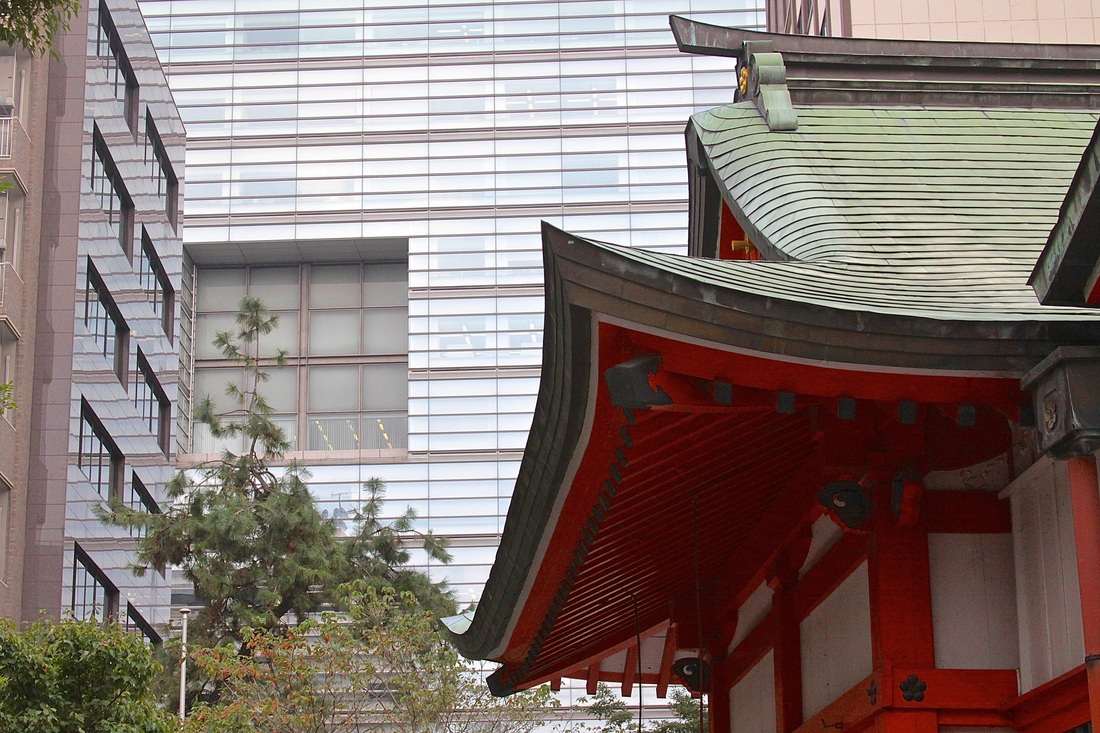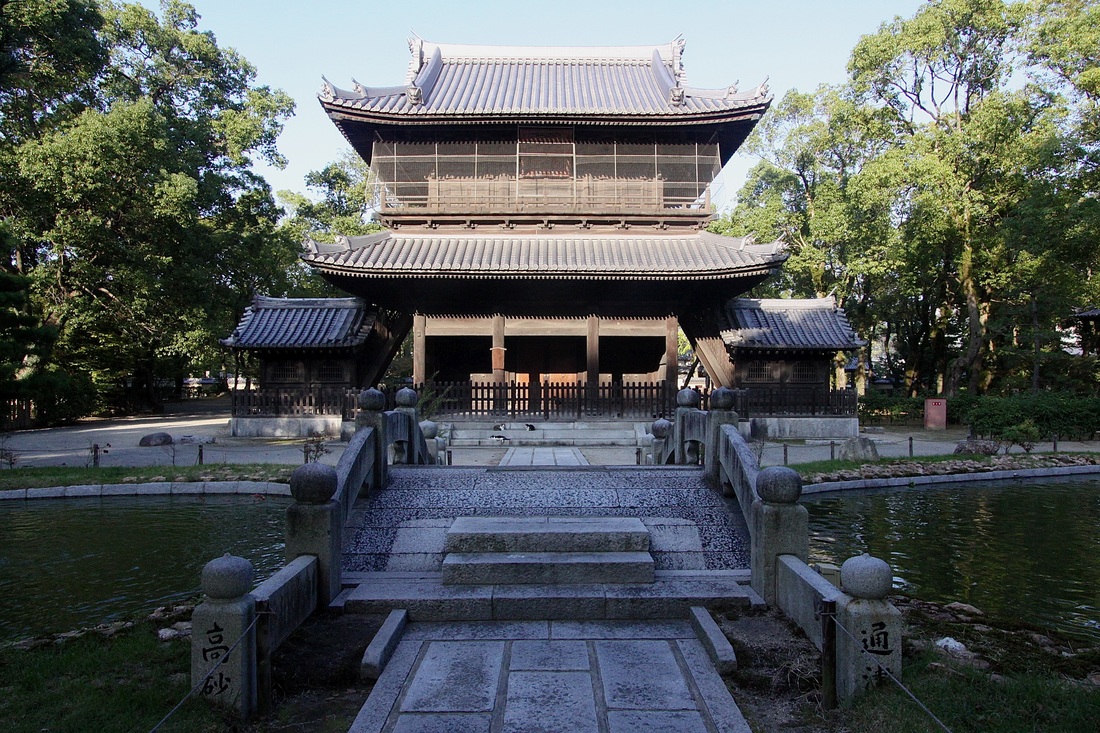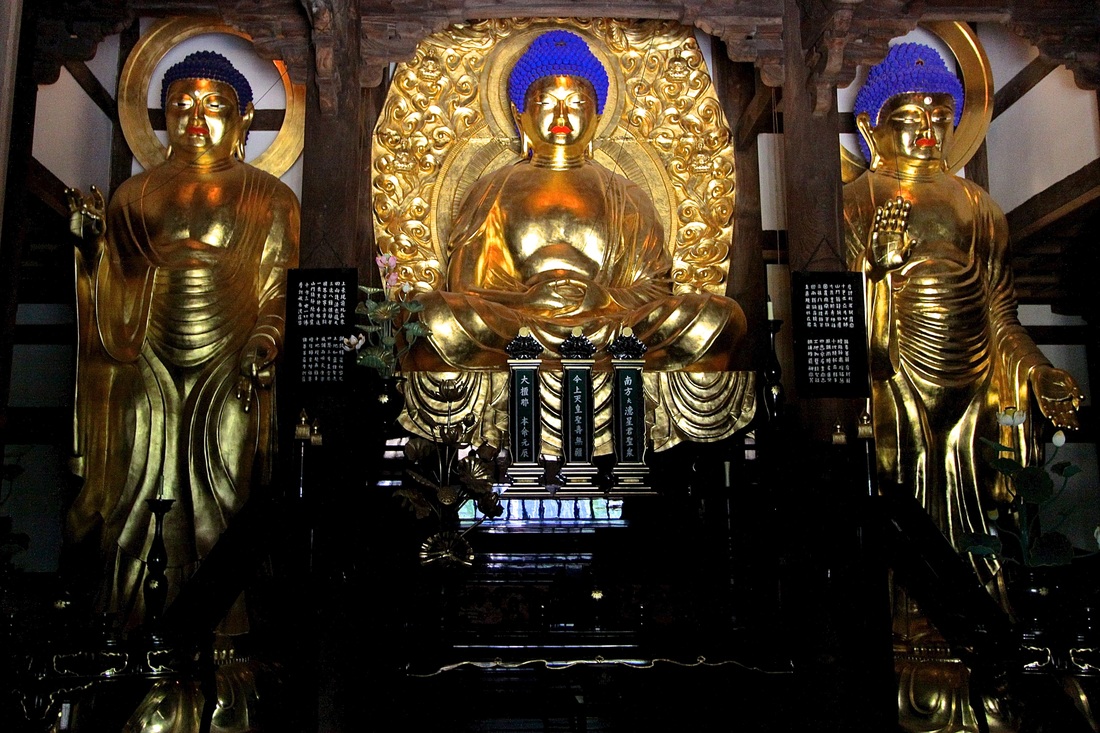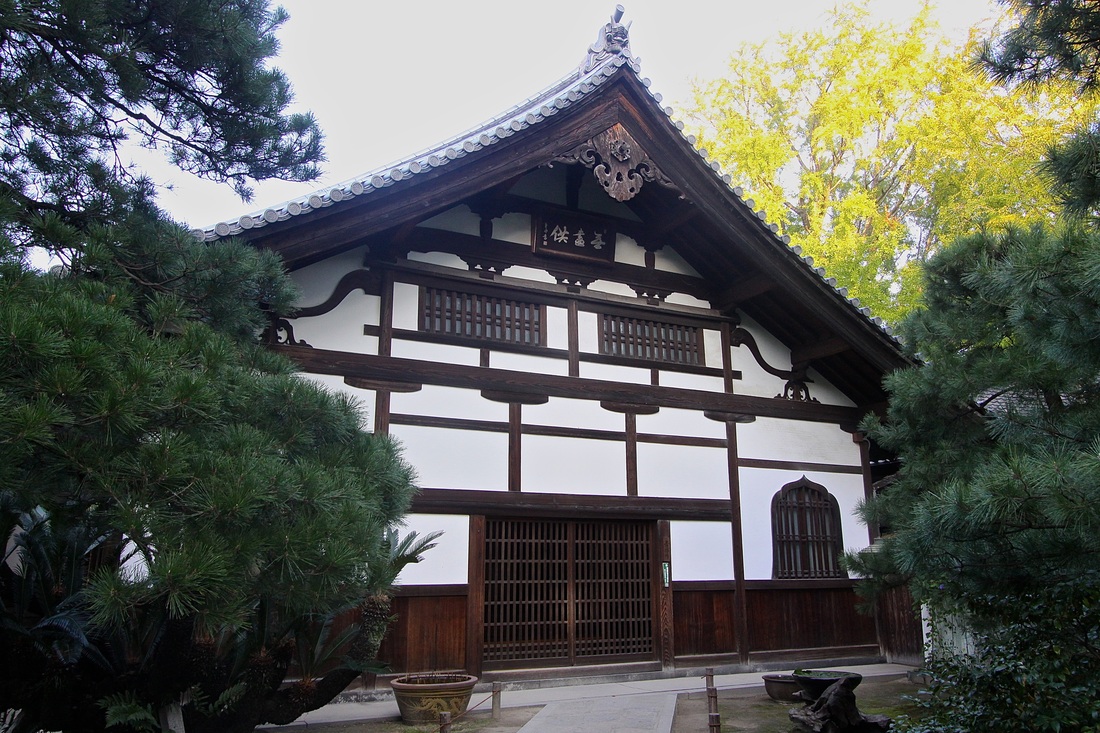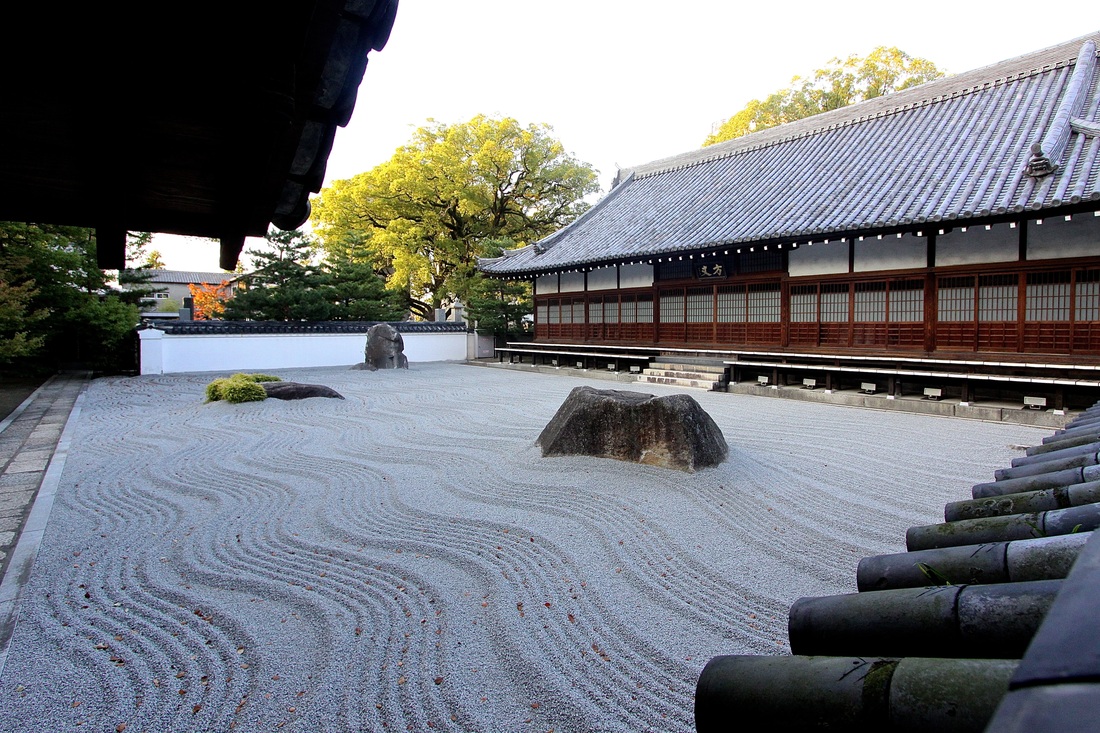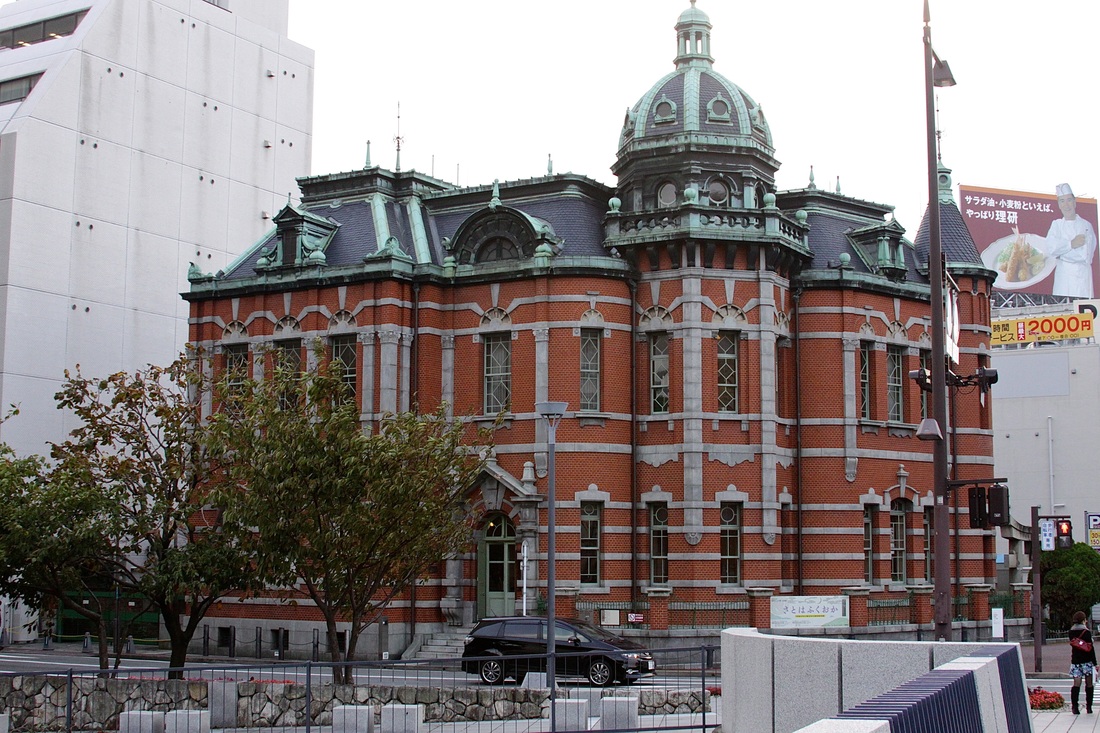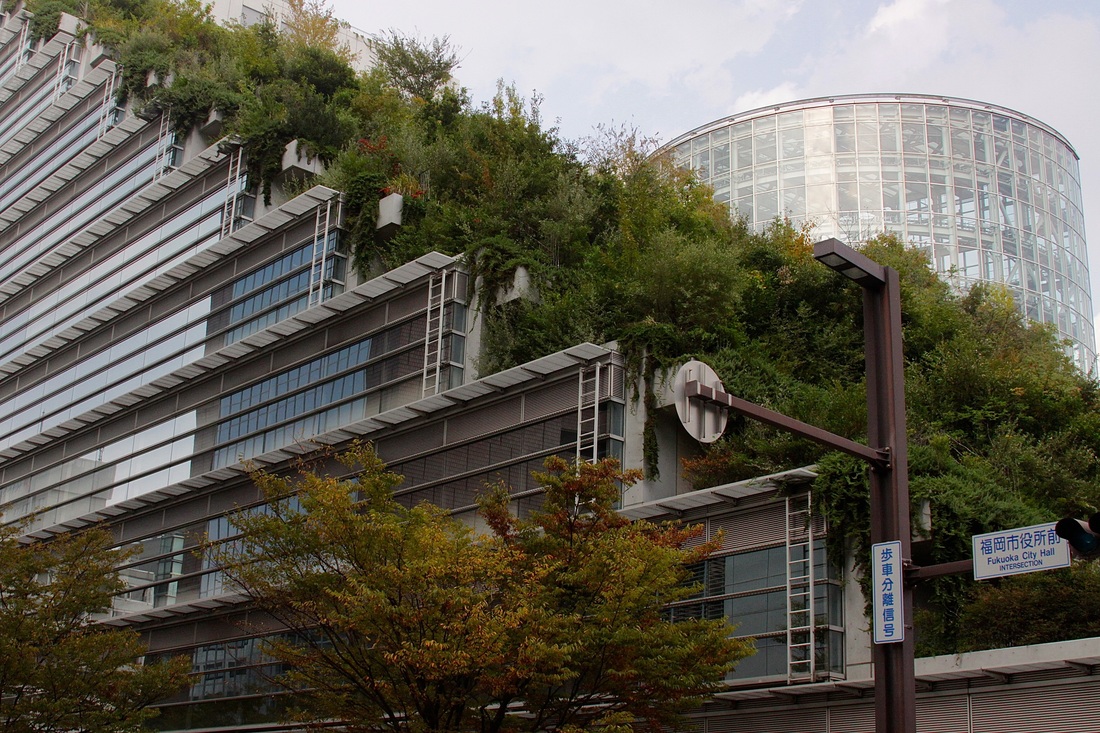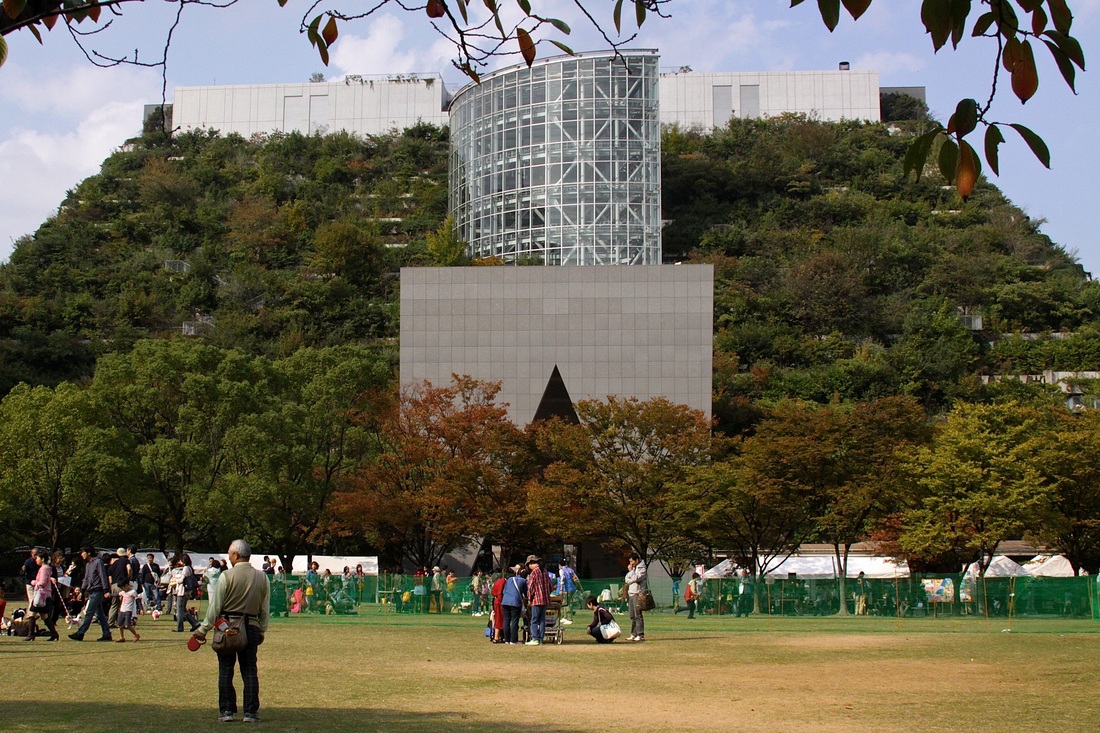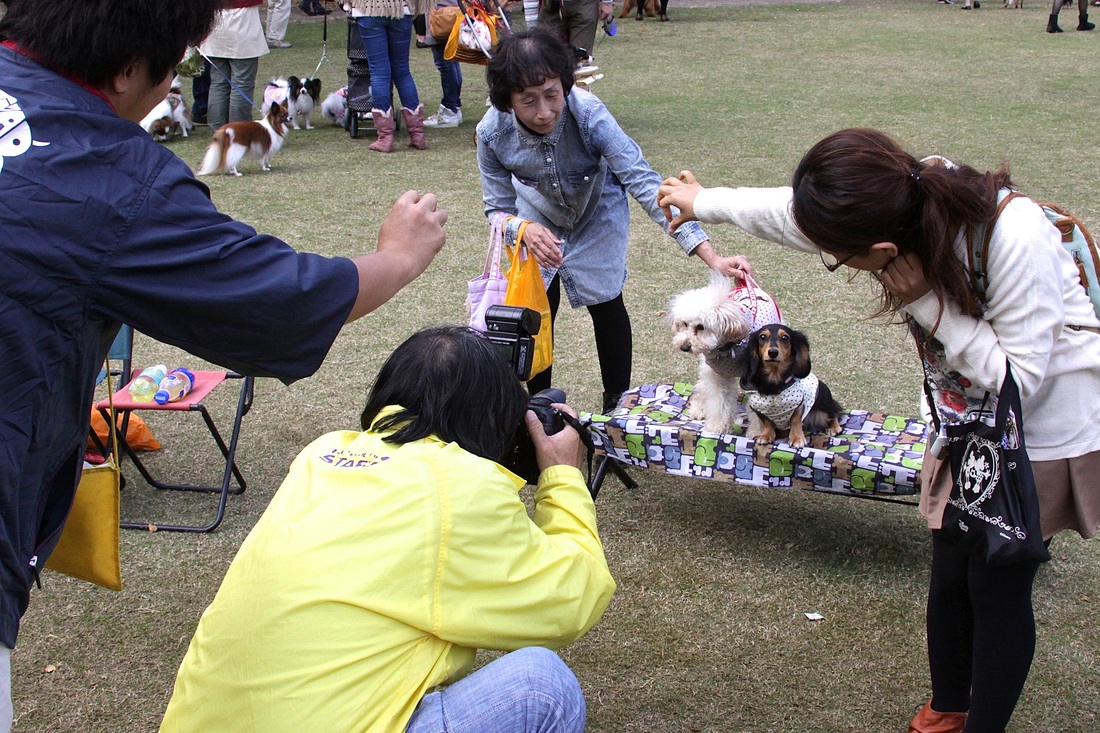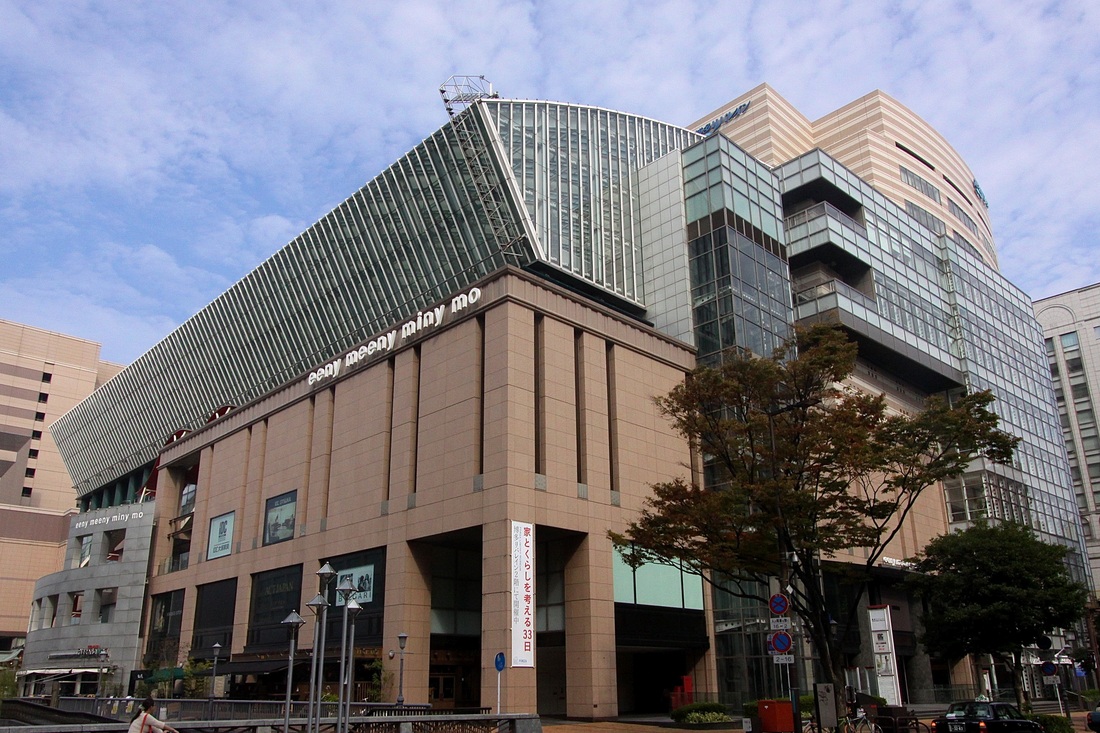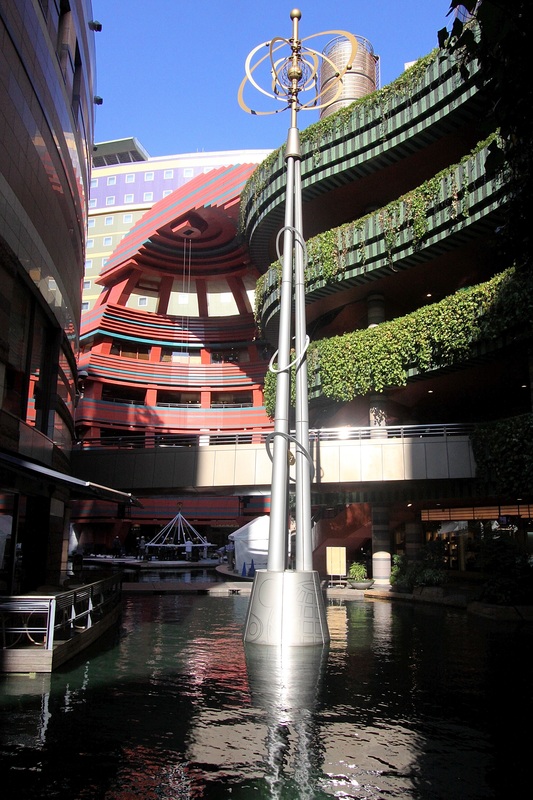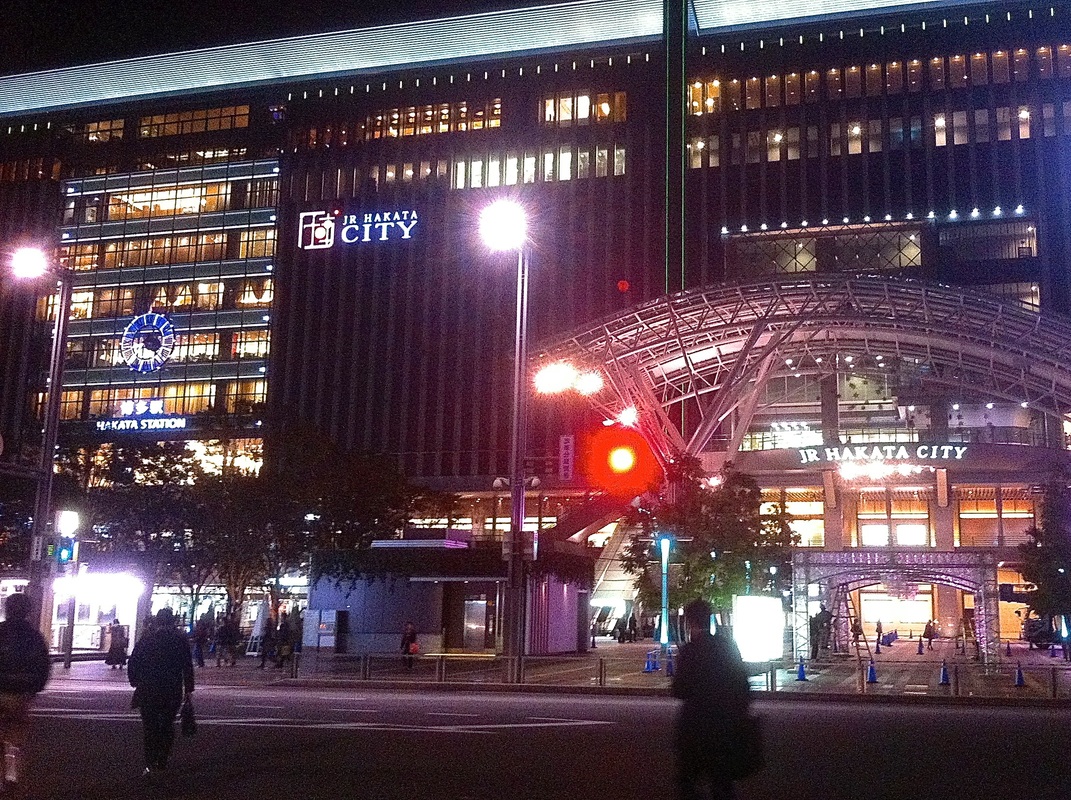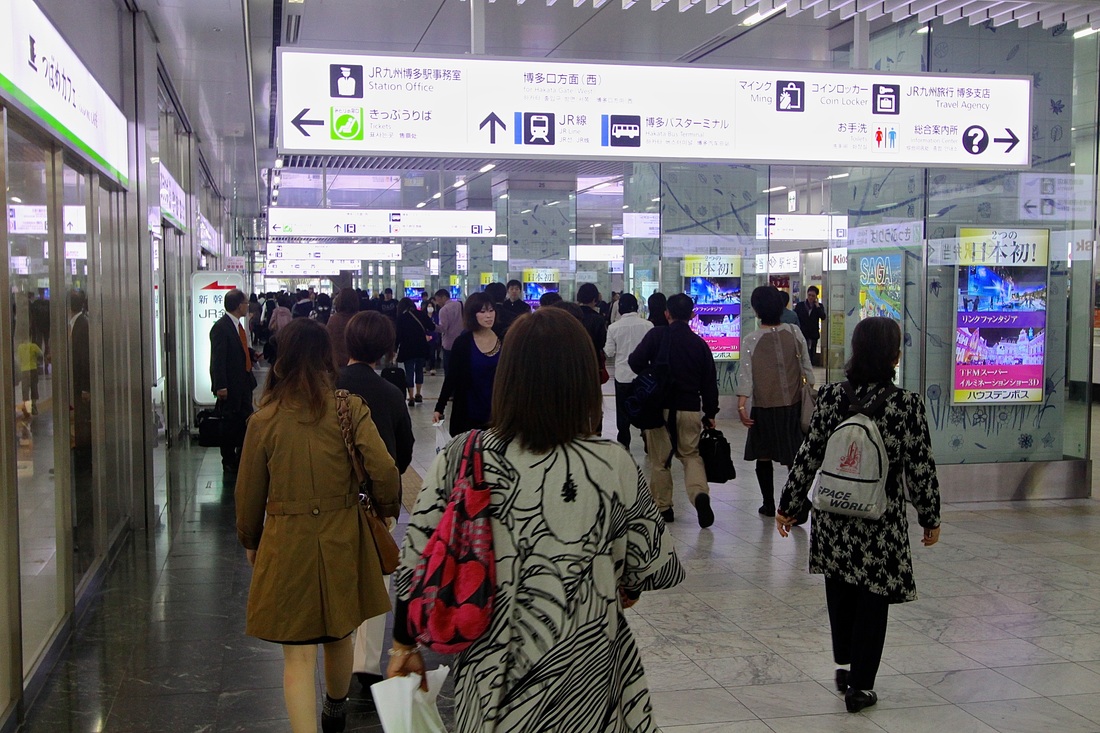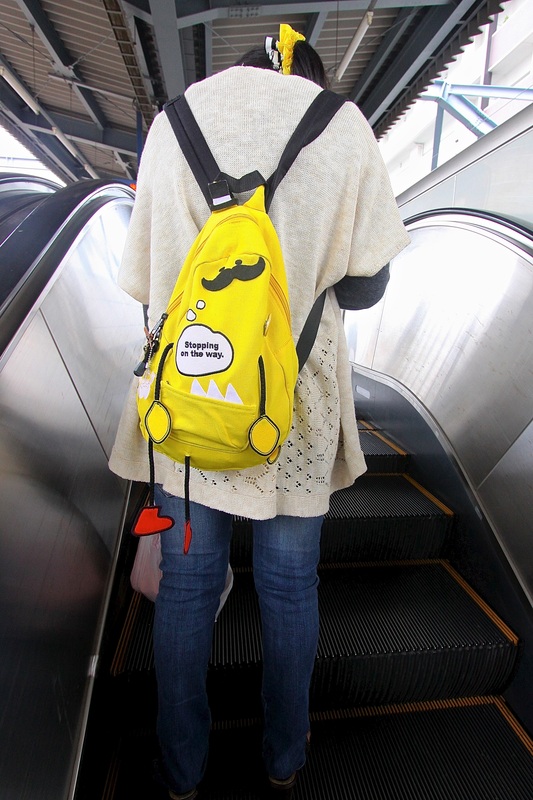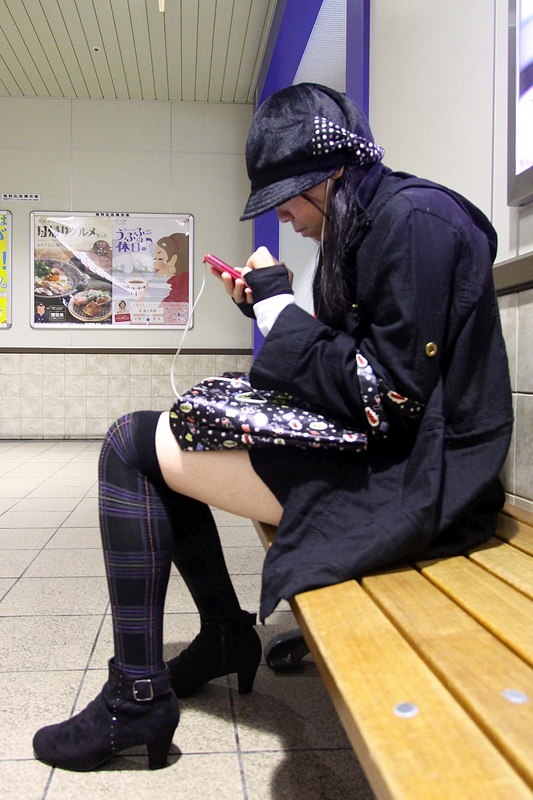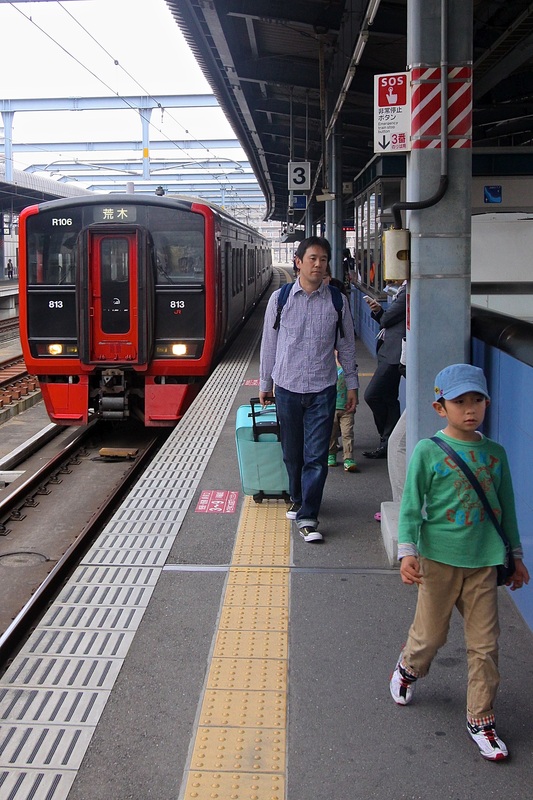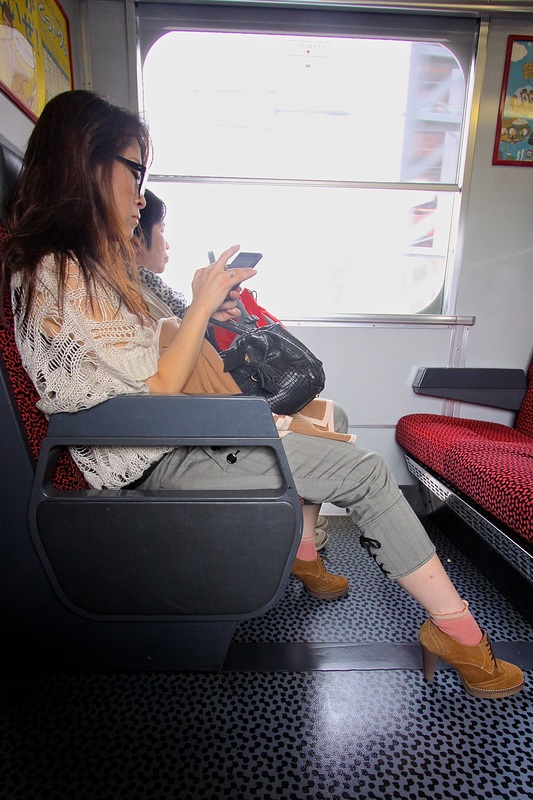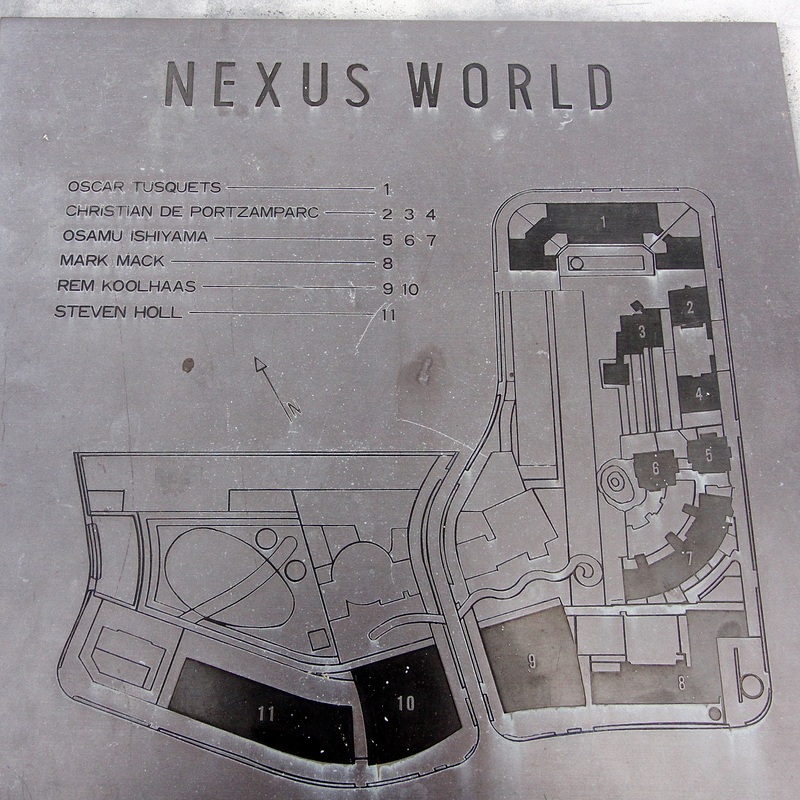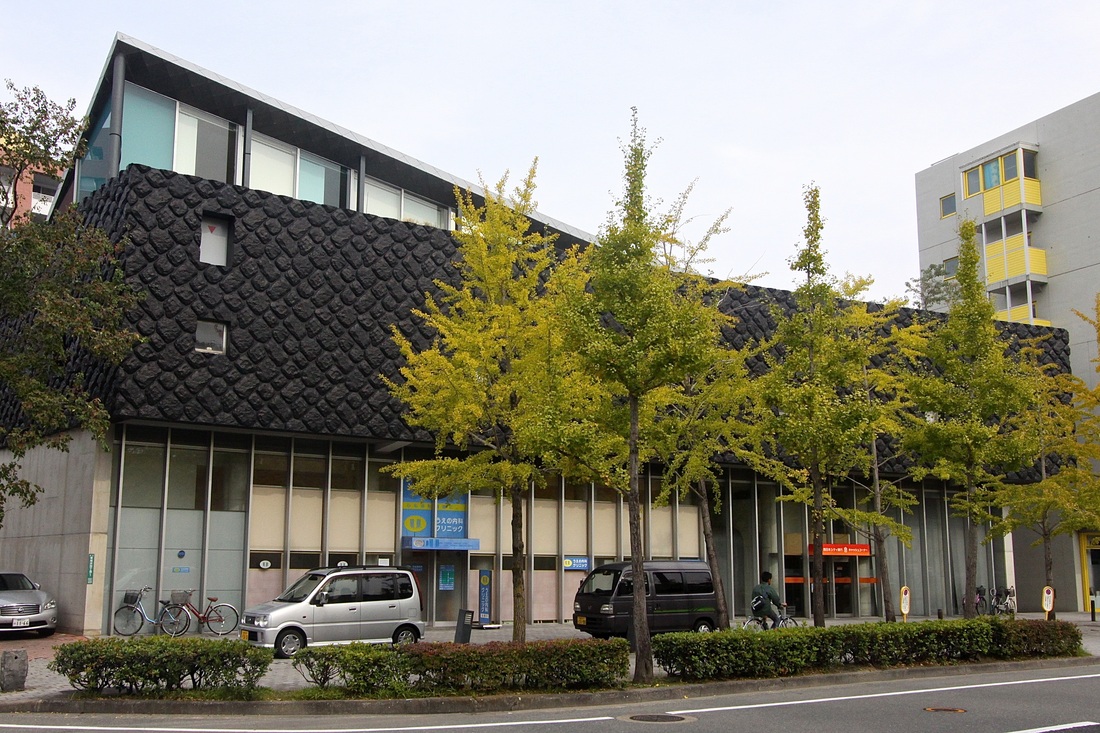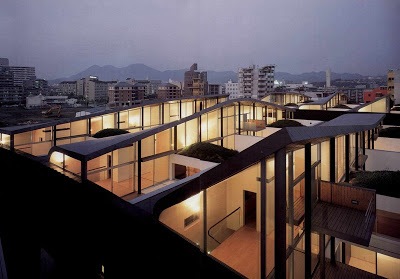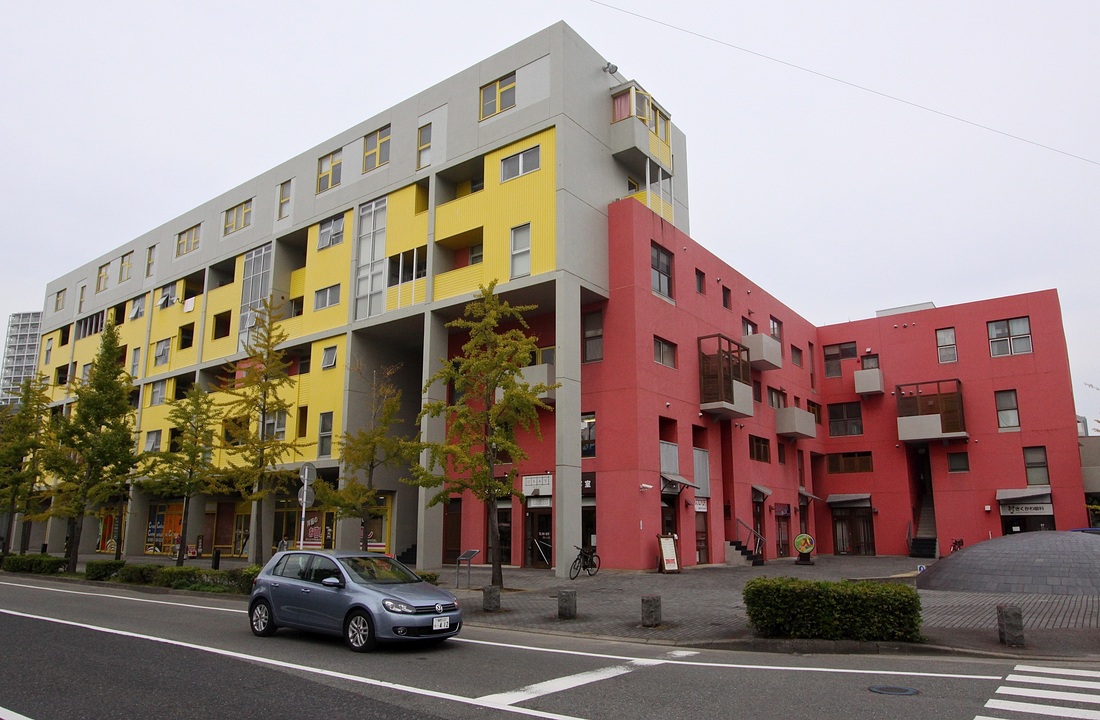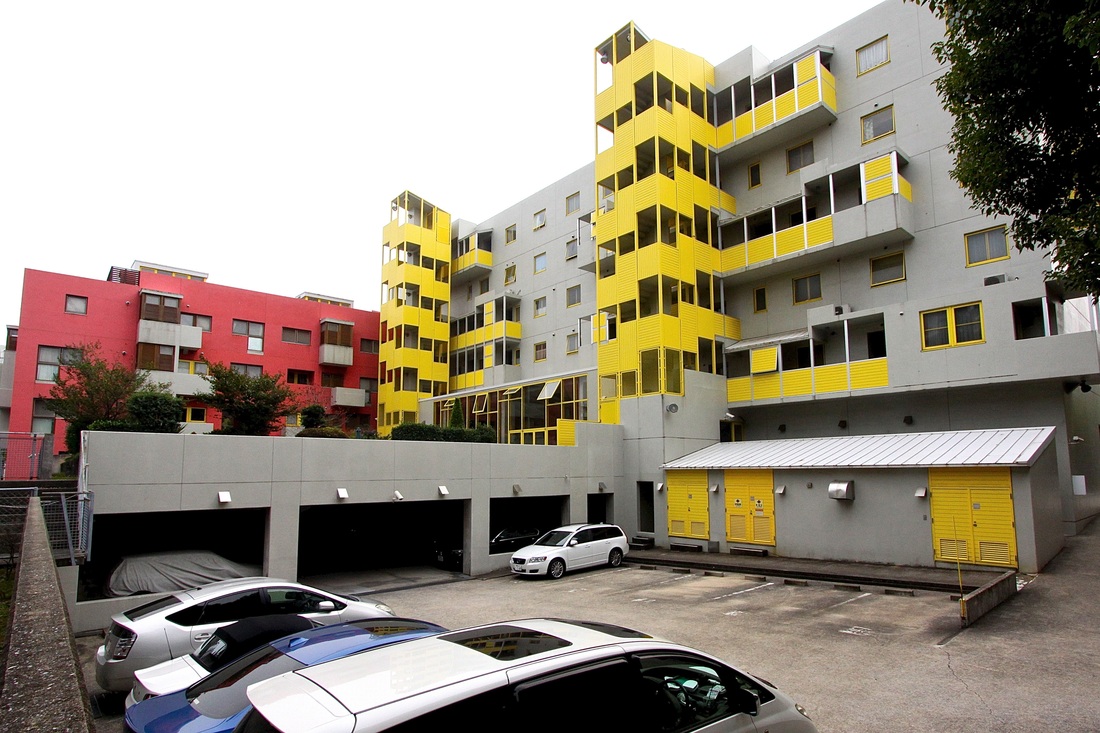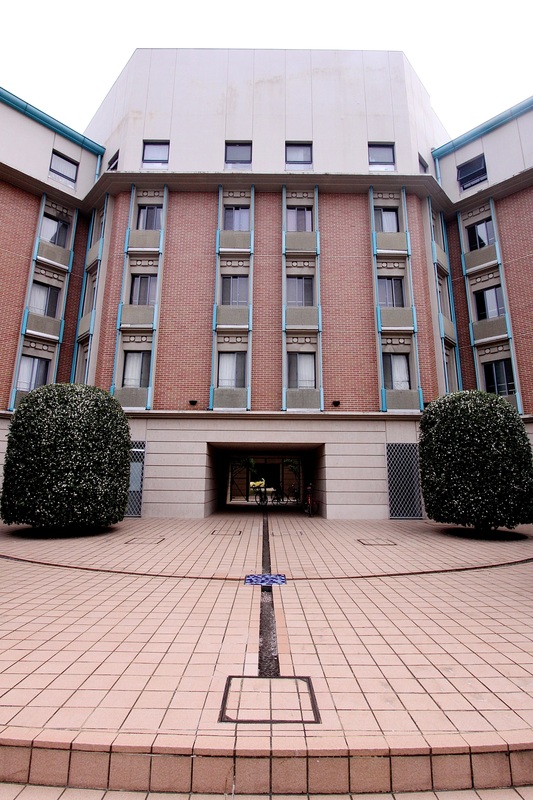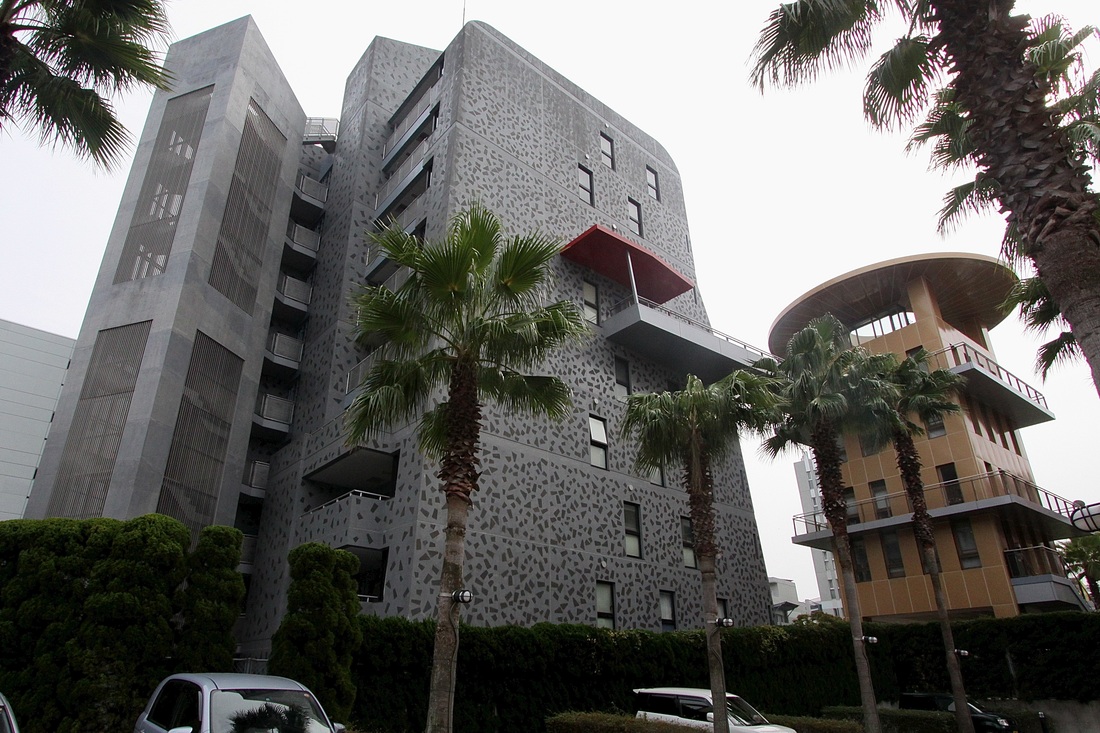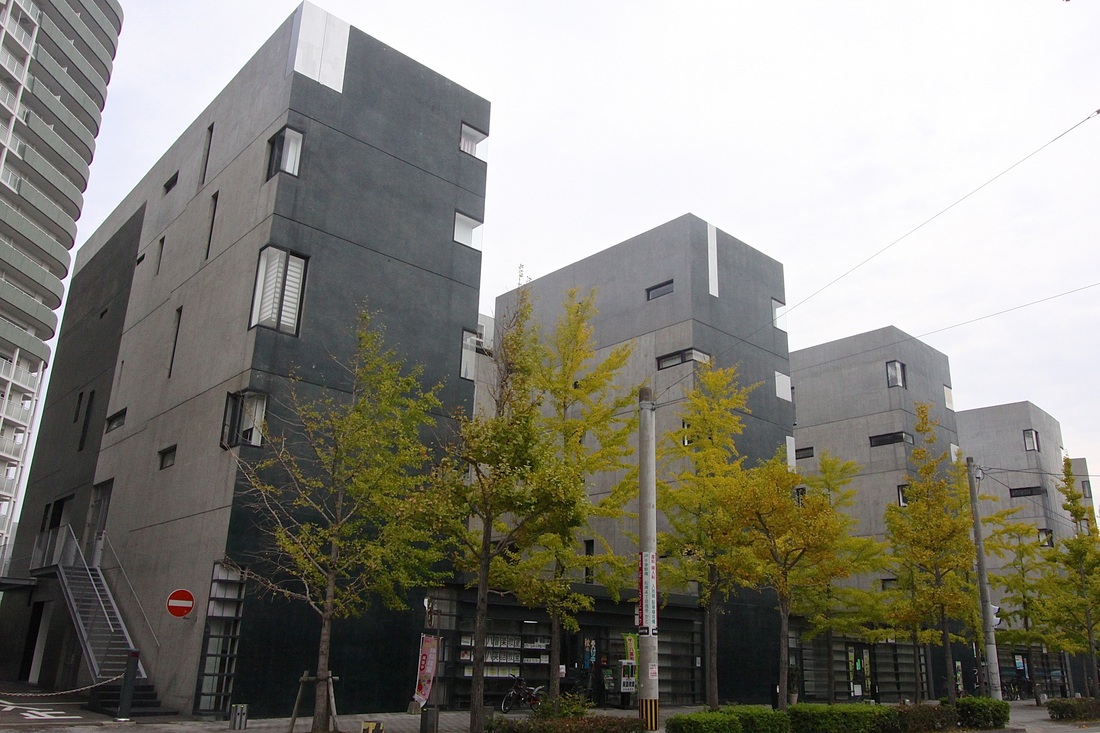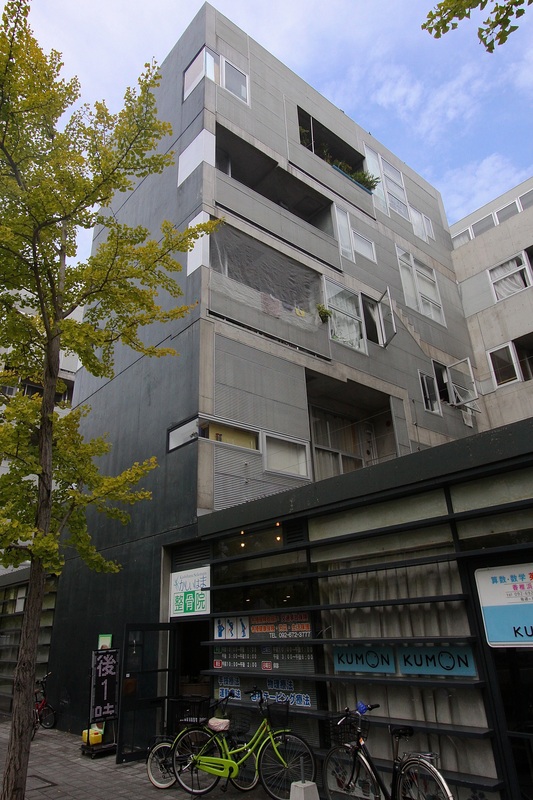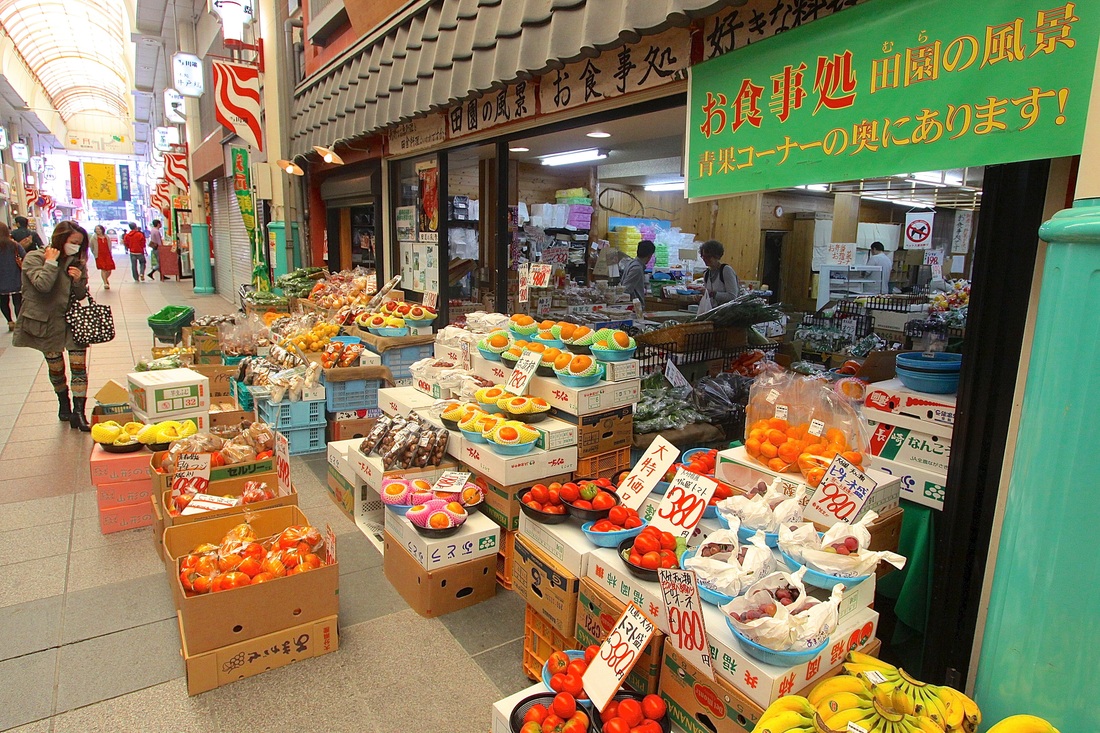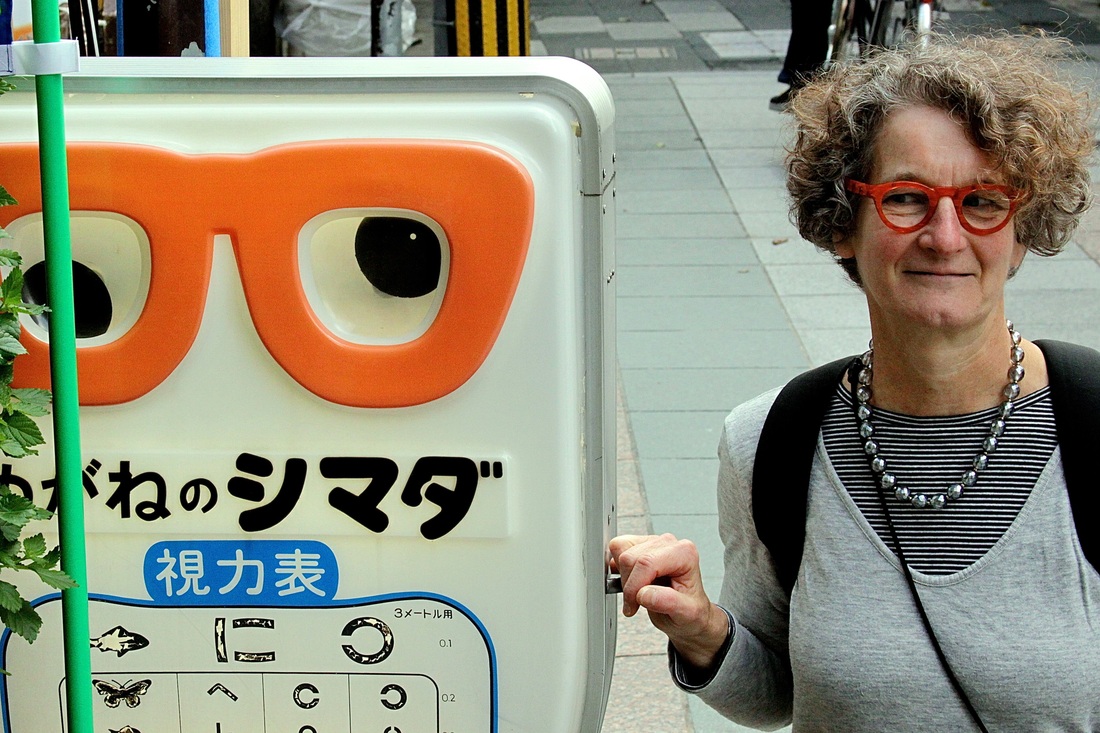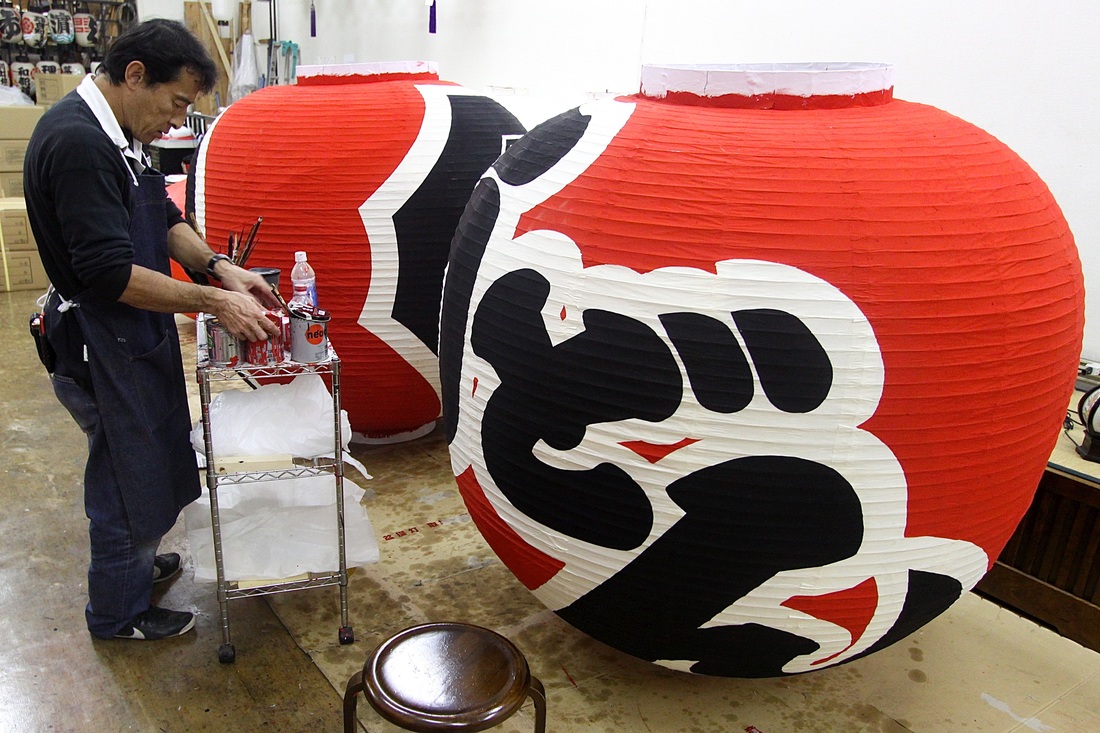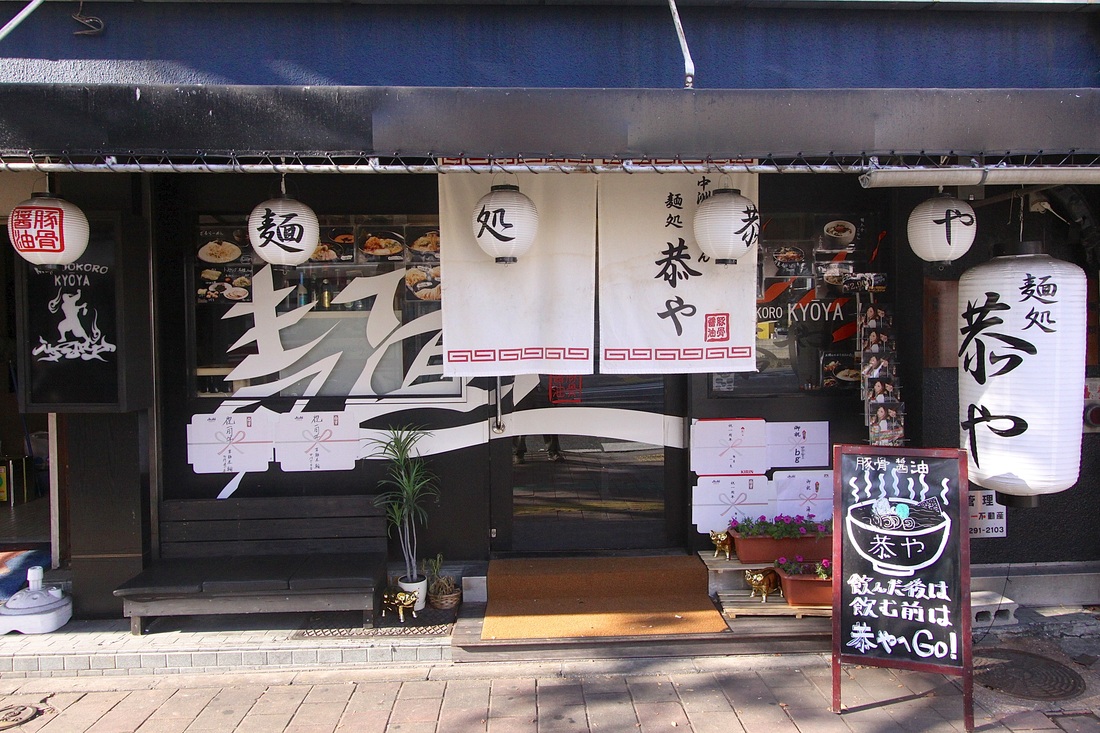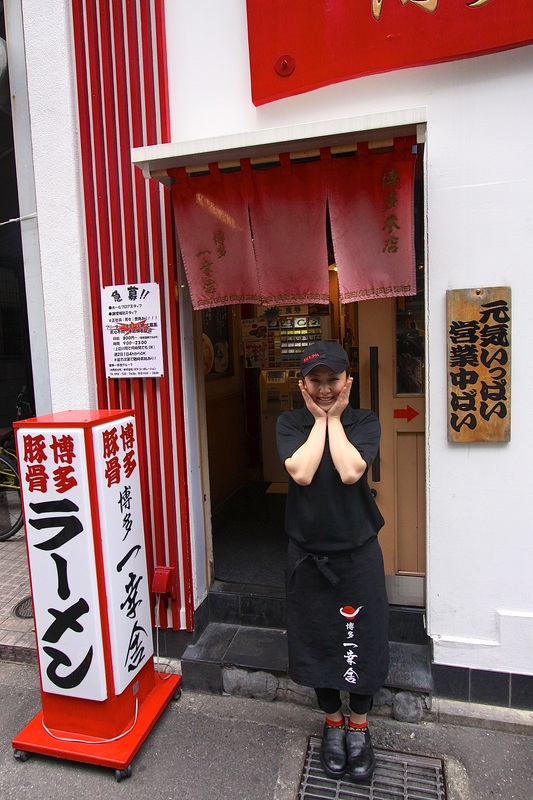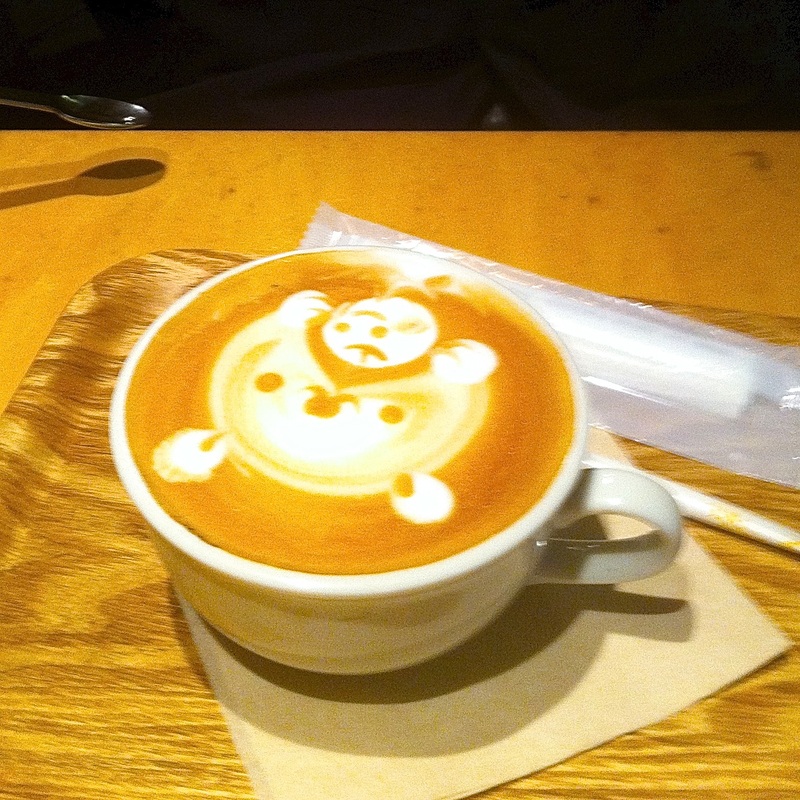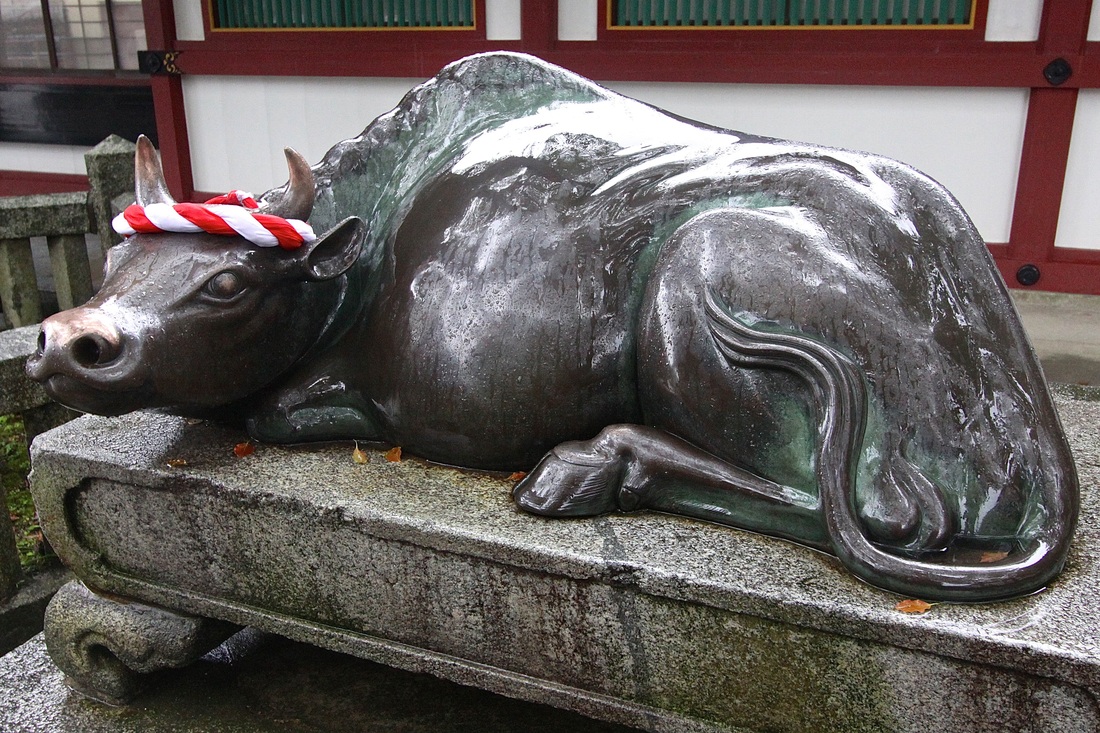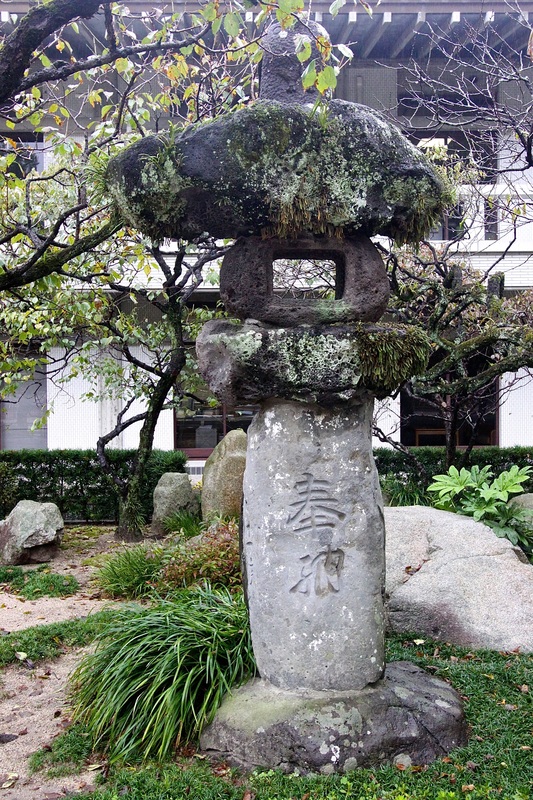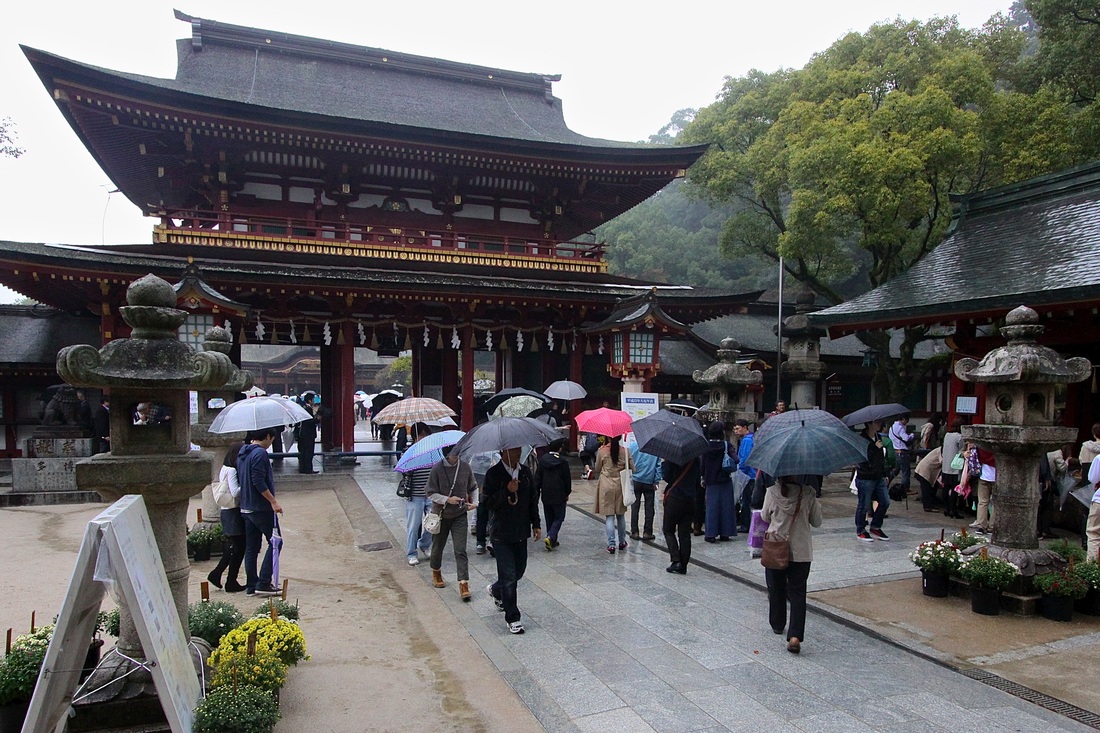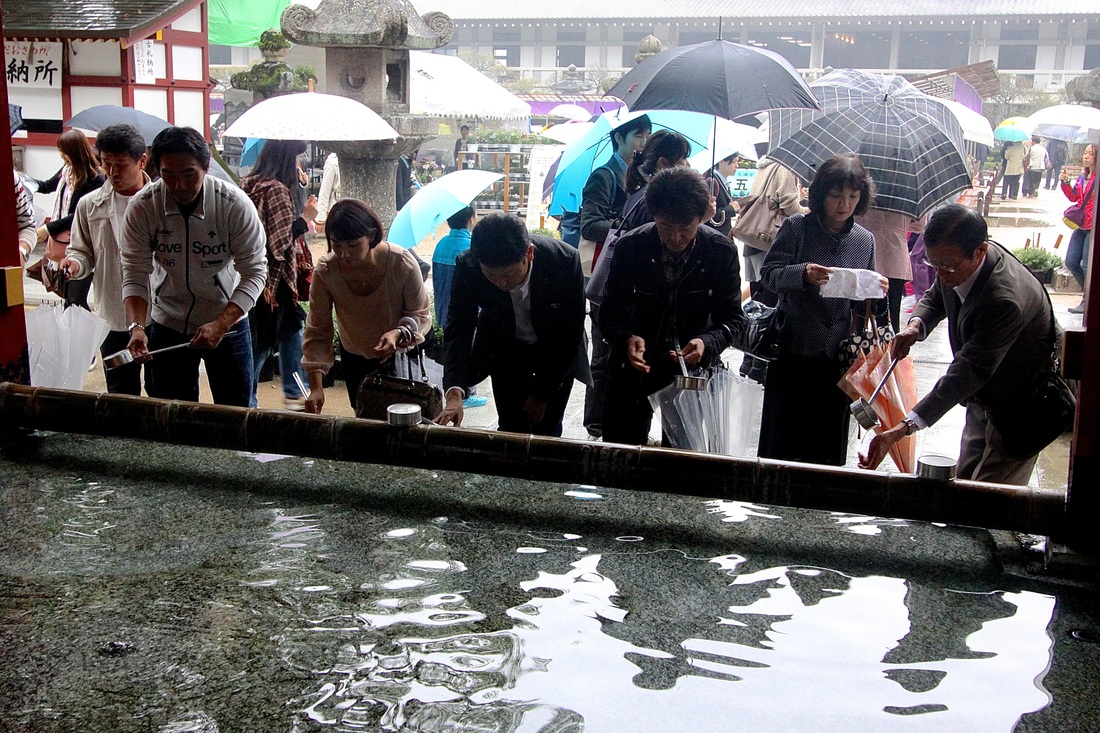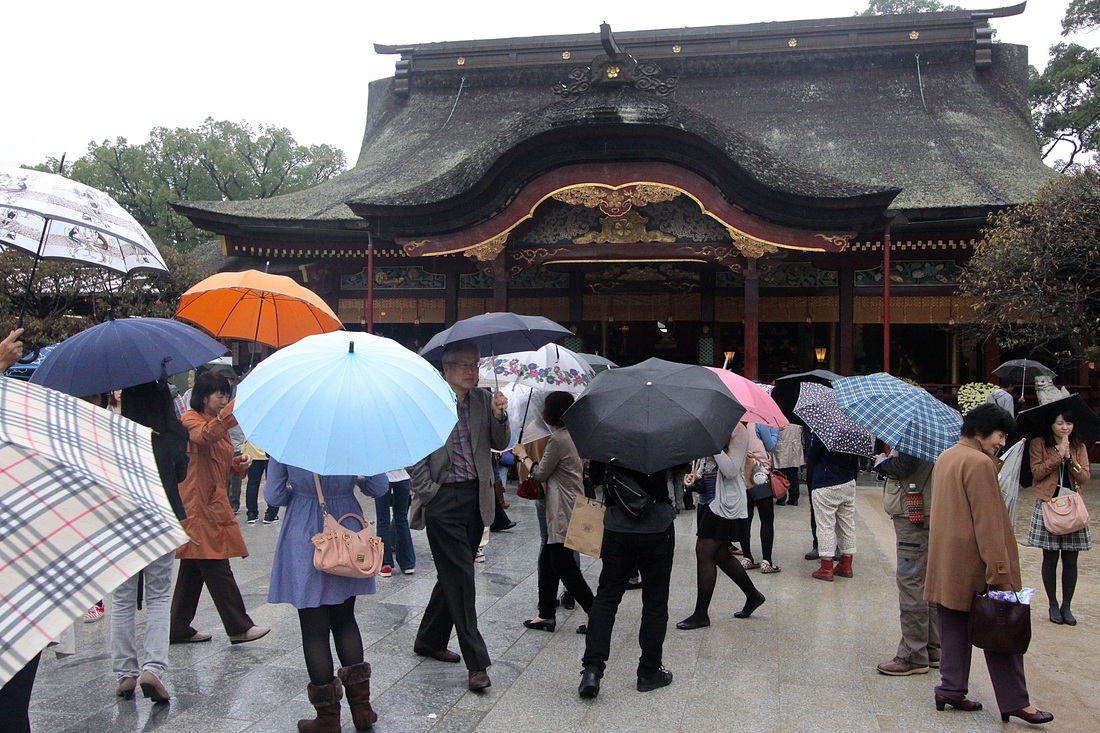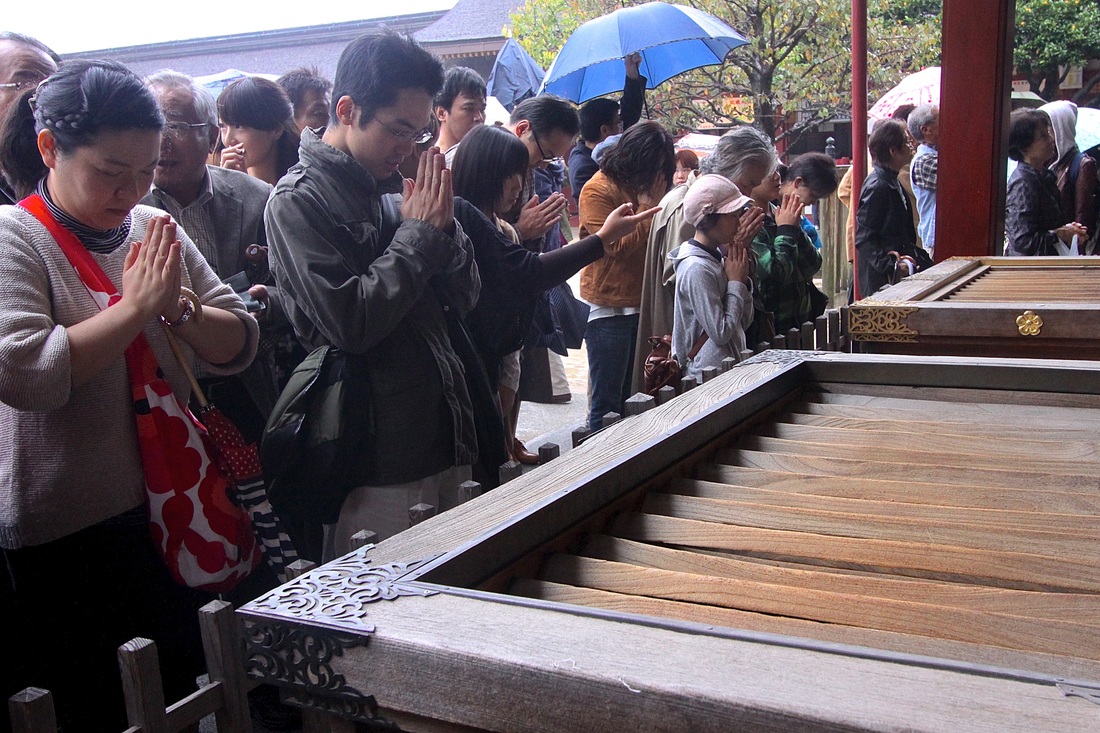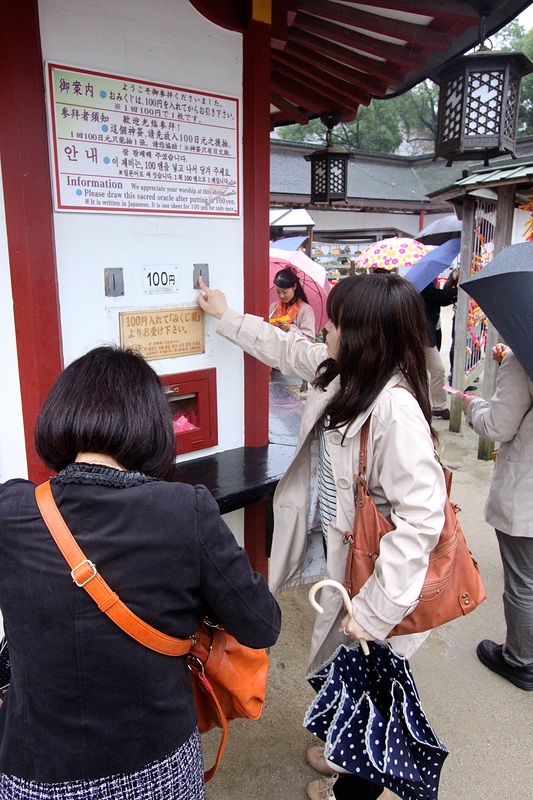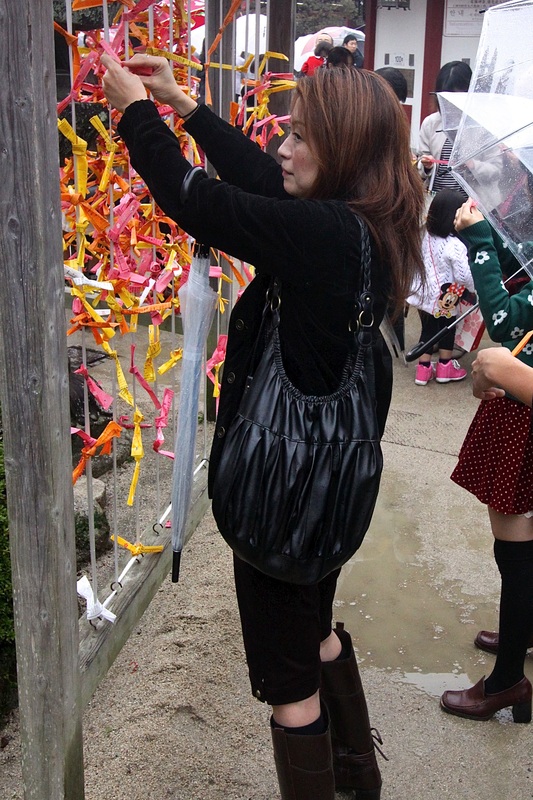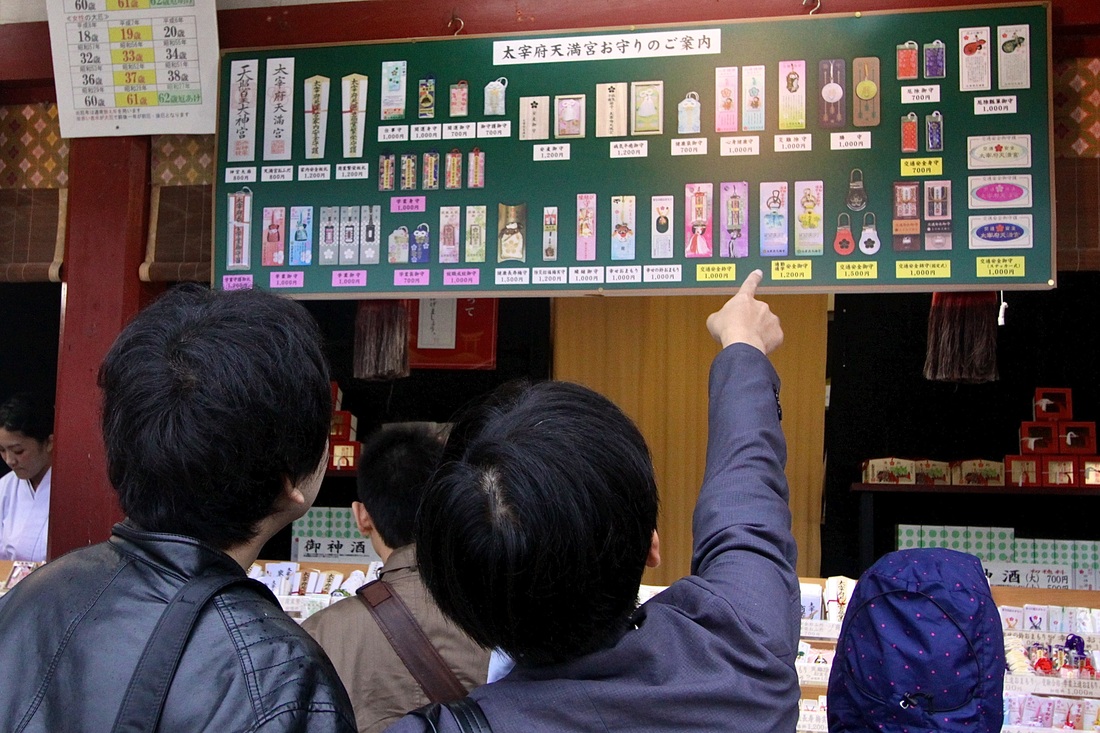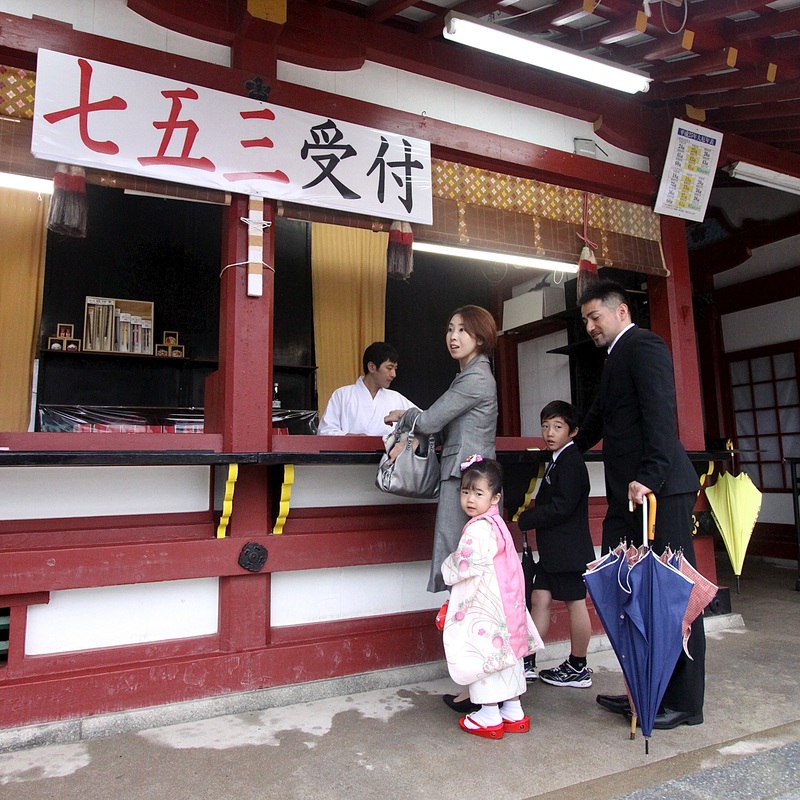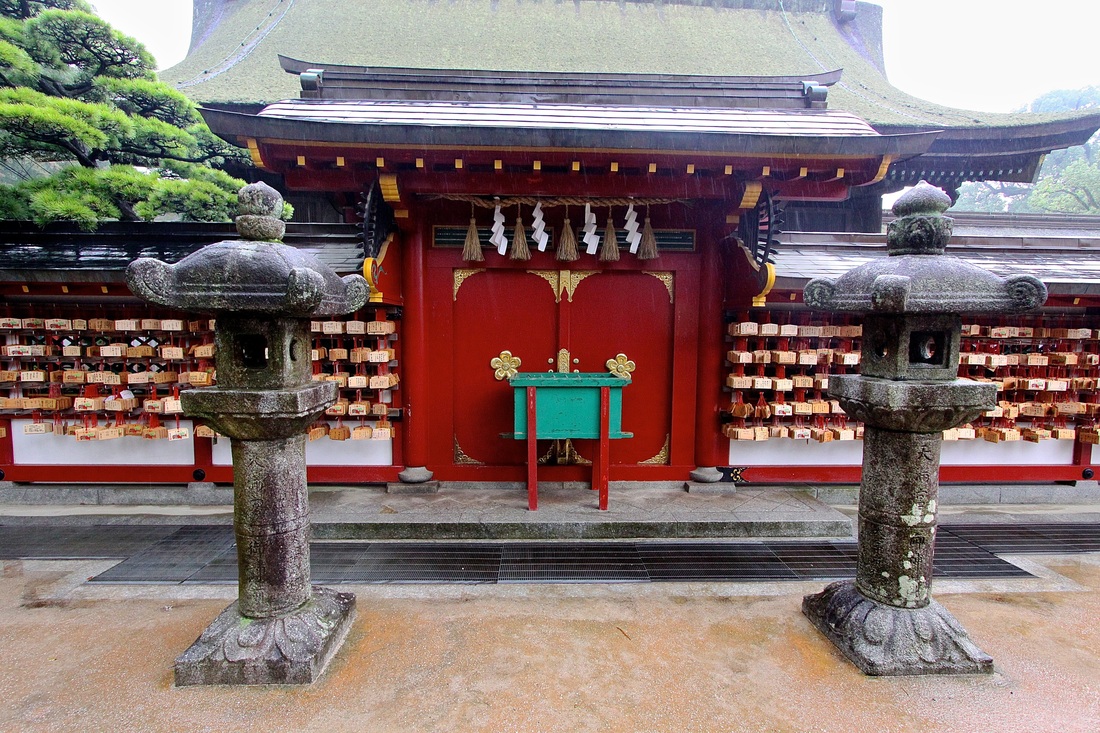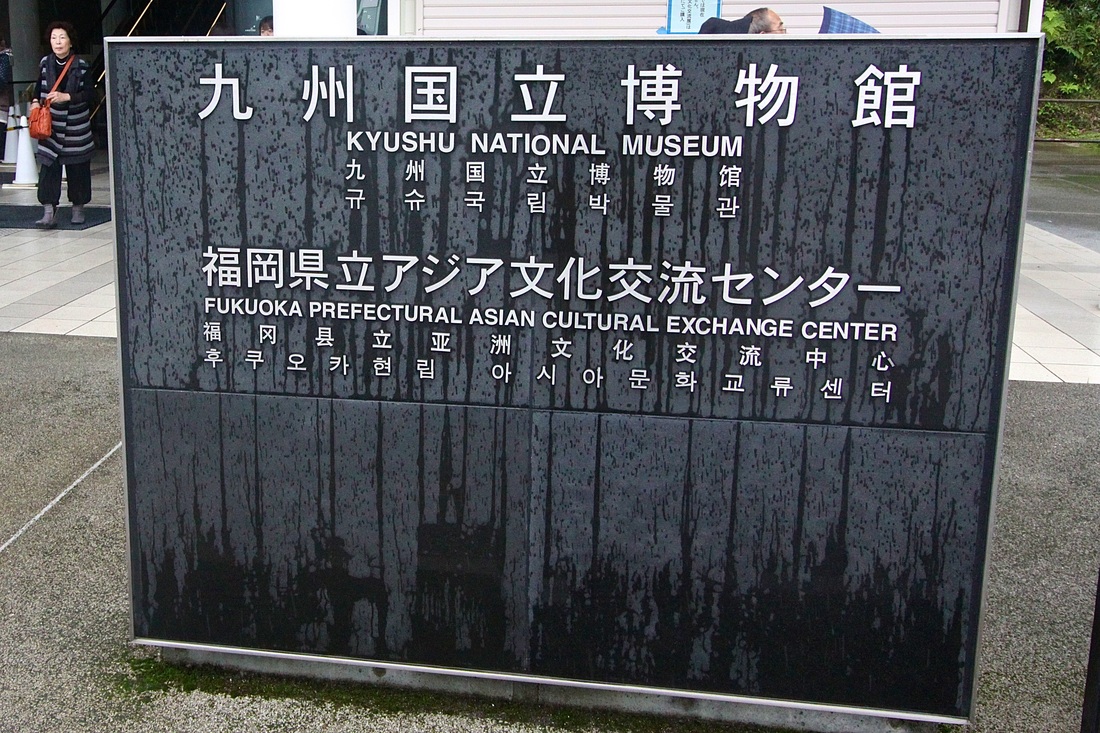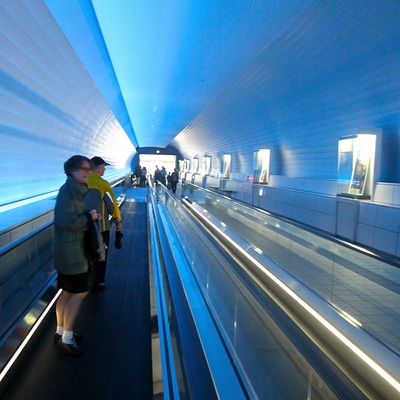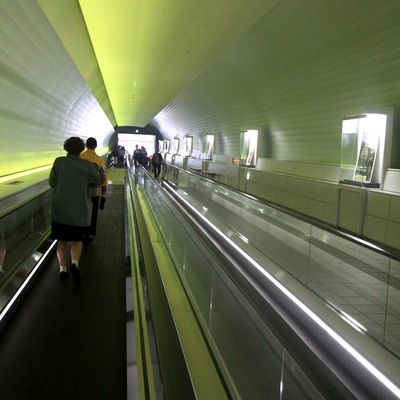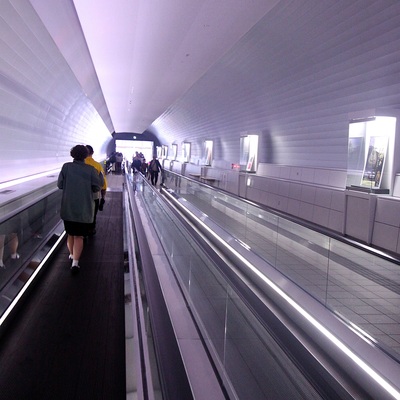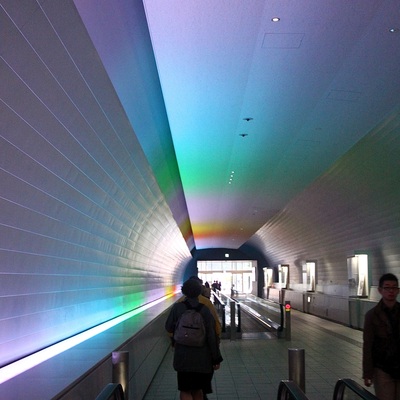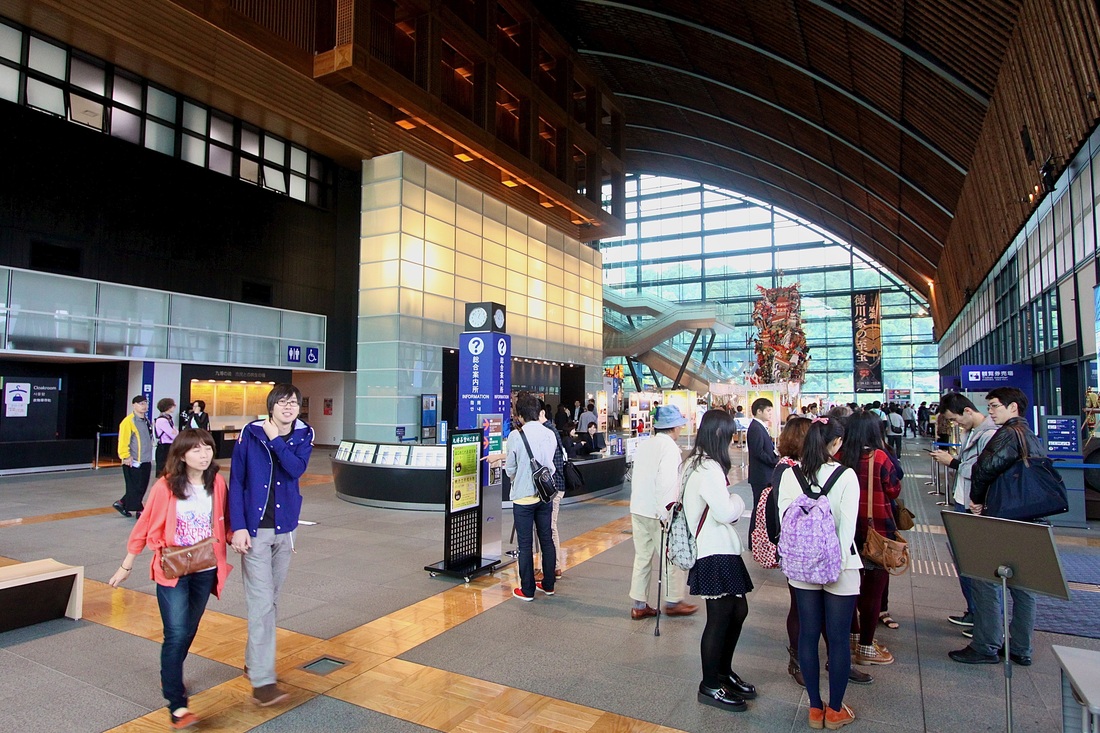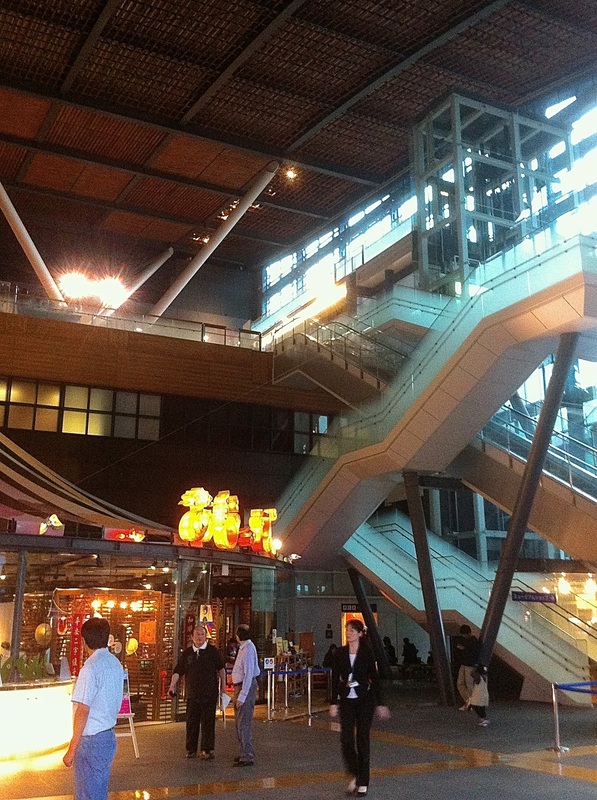In the old, old days, the northern most important place in Japan's southern island of Kyushu, was Hakata. In the old days, a samarai general was rewarded with it and built his castle next door, and called it Fukuoka. When Japan Rail terminated its line in Hakata, that was the station's name. Later, when a vote was taken to choose one or the other for the city name, Fukuoka won (by one vote). But the train still ended in Hakata, and, for JR, Hakata is it. Endless confusion when buying train tickets...
…such as I did when taking a fast train (a.k.a."shinkansen", "bullet train"). Note the bi-lingual information board at the end of the car is now in English mode. Equally note the limited amount of overhead luggage space. Those with suitcases know there is space behind the last seats; those who know even more, send theirs ahead by a parcel delivery service.
Hakata's station may be brand new, but the traditional courtesy of the station attendants, bowing and welcoming passengers, remains the same. The couple coming with more colorful clothing, and suitcases, are my friends Sarah and Steve. They traveled with me in 2001, and, at last, we were doing some more.
The Washington Hotel (grey tall one on right) is a typical "business hotel"...
….with minimal rooms, but all the necessities, bed, desk and ...
…"unit bath". Note they have the heated toilet seat with built-in bidet.
And of course the morning in-room coffee maker.
Hakata is on the delta of a river, whose branches have been made into canals, some large enough for boating.
And along which are set up night food stalls, heavy on the ramen noodles and b-b-q kebabs.
Upon arrival in Tokyo Steve suffered an urinary track issue, which landed him in a hospital there. A follow-up was suggested for when they got to Hakata, so the first item was that. I learned some new vocabulary, as well as the procedures for checking in, seeing the medical staff, and, of course….
…paying the bill. It was pretty cheap, even at twice the price for Japanese residents.
We had to wait for prescriptions to be filled, so we had a bite at a traditional Japanese restaurant in the hospital lobby.
Back in those old, old days, Kyushu was on the front line of globalization, exchanging people and goods with Korea, China, Okinawa, and, when they finally arrived, European countries. (Later, by the time America got on the scene, Kyushu had been eclipsed by Kyoto and then Tokyo.) So there are some significant religious and cultural sites, such as Hakozaki Shrine (923). Through the centuries of wear, war, and natural disasters, I am sure items, such as this stone torii...
…or stone lanterns...
…and of course wooden buildings, have had numerous replacements. The signs read "7, 5, 3", an annual event where children of those ages visit shrines and pray for health, wealth and happiness. Or at least the latest Nintendo device.
Kushida Shrine (757) is the main shrine for Hakata, and it is where lots of families bring their children.
All dressed up and ready for the photograph to be taken...
…while older brother acts out a bit. For 50 yen one can get a fortune out of that white box. If you like it, tie it a tree for the deity to work on it. Or, if you don't, still tie it on a tree and ask the deity to quash it.
Hakata seems to be trying all sorts of things to get tourist tour groups to come, and get around town.
Major shrines are able to maintain their expansive grounds, but smaller ones get penned in by modern construction.
Shinto shrines predate the arrival of Buddhism from the mainland, but with its proximity to it, Kyushu had some of the earliest temples….Shofuku-ji, 1195, is not that old, (Horyu-ji, in Nara, dates from 607) but it is said that it was the first in Japan of a new Buddhist sect, Zen. And the rest is history.
Who knew buddhas had blue hair!
Near by, a less grand temple….
…had a spectacular dry-landscape garden: Arainami-en - "Washing Waves Garden".
Although pretty much in a rush to tear down old and build up new, some Meiji Era (1868-1912) Westernized buildings have been preserved. Nippon Life Insurance Co., 1909, K. Tatsuno (Tokyo Station designer). Now owned by the city for exhibitions, with cafe and meeting rooms.
However out with the old and in with the new is well underway. Especaily in the early 1990's Fukuoka invited many international and well known Japanese architects to design various buildings.
Emilio Ambasz (Argentina, NYC) did this "green" multi-use commercial building. Exterior steps allow one to climb to roof-top overlooks. The open space holds various events, such as a "dog-day"...
…where one can have ones dog photographed, with lots of prompting to "look at the camera", but the smaller of the two is looking at the wrong photographer!
Riverain, another mixed use commercial building, fronts a canal...
..whereas LA's Jerde Partnership created inside their multi-use mall, a canal of their own, for "Canal City".
But when it comes to Japan Rail building a multi-use structure, I suspect a large Tokyo firm did it (2011).
Plenty of space for large numbers of people arriving, departing, changing trains (note bi-lingual direction signs) ...
…and places to catch the latest fashions….
…and electronic devices.
A normal inter-urban train...
…taken for a couple stops, gets one to ...
…one of the most innovative contemporary architecture developments in Japan: Nexus World - a development of low to mid-rise residential in an expanding suburb of Fukuoka.
Rem Koolhass (Netherlands) met the requirements of commercial below, with residential above, but with a rather street- unfriendly facade.
It takes an internet procured photo to see that behind the black rock like walls are open and glass filled residences.
Mark Mack (LA) presents in form and color quite a contrast to Koolhass's.
Oscar Tusquets (Barcalona) brings a Spanish post-modern formalism to his project.
Christian de Portzamparc (Paris) was having fun.
Steve Holl (Seattle, NYC) had brought his Pacific North West grey to his design...
…and maybe its also why he does well with windows and day-lighting.
And of course Hakata has typical Japanese street scenes: a covered shopping arcade street...
…with glasses stores….
…lantern maker….
…high graphic design restaurants...
…and low graphic ones, with surprised staff when un-expectedly photographed.
And of course coffee/tea shops, which are more and more selling the full-on menu of espresso drinks.
Dazaifu is a town near Hakata known for Tenmangu Shrine, dedicated to the spirit of SUGAWARA Michizane, a 9th Century scholar banished from Kyoto to Kyushu. His difficult life here did not deter him from his studies, and gentlemanly demeanor, such he became revered at a God of Literature and Calligraphy. He is said to have made the journey on an ox, so here, and in all the Tenmangu Shrines around Japan, an oxen statue can be found.
The walks thru the shrine are lined with very rough and naturalistic stone lanterns.
Most shrines are fronted by a torii gate, but here there is a distinctly Chinese influenced gateway.
As in shrines everywhere one first rinses hands and mouth in an act of purifications, and then...
enter the main courtyard in front of the Honden (Main Shrine). This dates from 1591 and also built with Chinese characteristics (especially the bowed roof over the central entry).
A fence and coin boxes mark the limits into the shrine which a routine visitor may go. A toss of a coin or two and a prayer, especially when facing an important exam.
As in Kushida Shrine there is a fortune dispensing machine, but at twice the price...
…but one gets it on very contemporary colored paper.
Paper fortunes are not the only items for sale for your protection or happy life: Tenmangu has a very organized display of all the variations of their amulets.
Needless to say, Tenmangu is a very popular destination for "7, 5, 3" visits: a special reception desk is set up, selling not only items directly related to this rite of passage, but also selling access to an inner area of the Shine where a priest will evoke SASAGARA's spirit in favor of the children's scholastic abilities. The girl wears traditional Japanese style kimono, but the boy has chosen to Western style kimono, a trend which seems to be strengthening.
So indeed popular places are really popular on certain dates, or seasons, but one usually can go around a corner or two and be totally alone…such as here at the Shrine's back gate. Just you and many many "ema", wooden plaques onto which people have written their wishes and desires for the diety to ponder.
And now for something totally different…opened 2005 (the first in over 100 years) is the first National Museum to focus more on history than on art. A sign of its contemporary nature (and location ) is the name is not in only Japanese and English, but Chinese and Korean as well.
The entrance is an easy walk from the Shrine, and then up escalators and a moving sidewalk, being entertained by a colored light show.
The building was designed by the post-war modernist architect, Kikutake, paired with the Tokyo firm, Kume Sekkei.
The entry hall was designed obviously with large numbers of people in mine, and leading them to...
stairs and escalators to the galleries above, where photography is not allowed.
